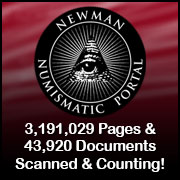 |
About UsThe Numismatic Bibliomania Society is a non-profit association devoted to the study and enjoyment of numismatic literature. For more information please see our web site at coinbooks.org SubscriptionsThose wishing to become new E-Sylum subscribers (or wishing to Unsubscribe) can go to the following web page link MembershipThere is a membership application available on the web site Membership Application To join, print the application and return it with your check to the address printed on the application. Print/Digital membership is $40 to addresses in the U.S., and $60 elsewhere. A digital-only membership is available for $25. For those without web access, write to: Charles Heck, Treasurer AsylumFor Asylum mailing address changes and other membership questions, contact Chuck at this email address: treasurer@coinbooks.org SubmissionsTo submit items for publication in The E-Sylum, write to the Editor at this address: whomren@gmail.com
BUY THE BOOK BEFORE THE COIN |
- WAYNE'S WORDS: THE E-SYLUM JANUARY 3, 2021
- NBS BIBLIOTALK ON SPECIAL COLLECTIONS, ART BOOKS
- CHARLES DAVIS NEW TITLES IN STOCK
- NEW BOOK: HISTORY AND COINAGE OF MACHIN'S MILLS
- NEW BOOK: FRACTIONAL CURRENCY OVERVIEW
- D. WAYNE JOHNSON (1930-2020)
- HISTORY OF THE METRIC SYSTEM CONTROVERSY
- VIDEO: THE ROARING 1980'S COIN MARKET
- SECOND PHILADELPHIA MINT IMAGE QUESTION
- MORE STORIES OF UNNAMED COIN SOURCES
- THE ULYSSES S. GRANT MEDAL FOR VICKSBURG
- NOTES FROM E-SYLUM READERS: JANUARY 3, 2021
- SURVEY RESULTS: COLLECTING PREFERENCES
- 2020 BRINGS UNEXPECTED BOOST TO NUMISMATICS
- VOCABULARY TERM: COINABILITY
- MARTIN LUTHER BEISTLE (1875-1935)
- HARVEY STACK'S NUMISMATIC FAMILY, PART 86
- RECOLLECTIONS OF D. WAYNE JOHNSON
- A DICK JOHNSON E-SYLUM SAMPLER
- HERITAGE OFFERS PARTRICK BRASHER DOUBLOONS
- STACKS-BOWERS OFFERS RARE HAITIAN NOTES
- DNW NORTH YORKSHIRE MOORS PART IV SALE
- NUMISMATIC NUGGETS: JANUARY 3, 2021
- SELECTIONS FROM DAVE WNUCK MAKING THE GRADE #44
- BEWARE ONLINE FAKE COIN SALES
- REGULATIONS FOR THE ANTIQUITIES MARKET
- ANOTHER MEDIEVAL CHINESE COIN FOUND IN ENGLAND
- VIDEO DEPICTS WRONG NOBEL MEDAL
- SECRET TO THE PERFECT ZOOM BOOKSHELF
- CAPITALISM RESOLVES COIN SHORTAGE PROBLEM
- TOOTH FAIRIES
Content presented in The E-Sylum is not necessarily researched or independently fact-checked, and views expressed do not necessarily represent those of the Numismatic Bibliomania Society.
WAYNE'S WORDS: THE E-SYLUM JANUARY 3, 2021
 New subscribers this week include:
Piotr Krzewminski, courtesy Pablo Hoffman; and
Loretta Schultz.
Welcome aboard! We now have 6,602 subscribers.
New subscribers this week include:
Piotr Krzewminski, courtesy Pablo Hoffman; and
Loretta Schultz.
Welcome aboard! We now have 6,602 subscribers.
Thank you for reading The E-Sylum. If you enjoy it, please send me the email addresses of friends you think may enjoy it as well and I'll send them a subscription. Contact me at whomren@gmail.com anytime regarding your subscription, or questions, comments or suggestions about our content.
This week we open with a new podcast, an update from literature dealer Charlie Davis, two new books, the loss of a numismatic giant, updates from the Newman Numismatic Portal, and more.
Other topics this week include the metric system in the U.S., the 1980s coin market, the Ulysses S. Grant Vicksburg medal, collecting preferences, 2020's boost to numismatics, M. L. Beistle, Brasher Doubloons, Haitian paper money, and the tooth fairy coin.
To learn more about the coinage of Machin's Mills, U.S. Fractional Currency, the founding of Coin World, the Collins hoard of 1828 half cents, the Robison Collection, the Gloucester Shilling, coinability, akcidefets, the Oliver Cromwell 50 shilling gold coin, a temperance movement pledge token, the Large Cent pie crimper wheel, the Island of Misfit Books, and a bad check for over a million dollars, read on. Have a great week, everyone!
Wayne Homren
Editor, The E-Sylum
NBS BIBLIOTALK ON SPECIAL COLLECTIONS, ART BOOKS
The latest episode of the Numismatic Bibliomania Society podcast is now available for listening. Check it out! It's on the NBS web site but also available elsewhere. Vice-President/Secretary Len Augsburger provided this report. -Editor
NBS Podcast "Special Collections and Art Books, with Cassie Brand" Posted
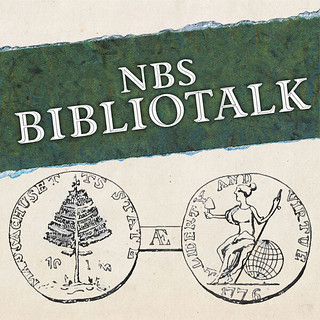 The latest episode of the NBS Bibliotalk podcast, "Special Collections and Art Books" is now available on the NBS website and other popular podcasting platforms such as Buzzsprout. Lianna Spurrier, Bibliotalk producer, interviews Cassie Brand, Curator of Rare Books at Olin Library, Washington University in St. Louis. Brand is an enthusiastic lover of the book, and her excitement for the topic enlivens this wide ranging 45-minute discussion.
The latest episode of the NBS Bibliotalk podcast, "Special Collections and Art Books" is now available on the NBS website and other popular podcasting platforms such as Buzzsprout. Lianna Spurrier, Bibliotalk producer, interviews Cassie Brand, Curator of Rare Books at Olin Library, Washington University in St. Louis. Brand is an enthusiastic lover of the book, and her excitement for the topic enlivens this wide ranging 45-minute discussion.
Brand covers the Southwick copy of the Declaration of Independence at Washington University, donated by the Eric P. Newman Numismatic Education Society, along with books from the Thomas Jefferson library that resided in the circulating stacks of Olin Library for many years, until their provenance was discovered. Brand also covers book thieves, the New York International Antiquarian Book Fair, and books as artistic objects, a concept that stretches the definition of a "book." Brand is in demand as a guest lecturer at Washington University and readily conveys her passion for the subject to appreciative audiences.
Link to "Special Collections and Art Books" on the NBS home page:
https://www.coinbooks.org/resources/podcast.html
Link to "Special Collections and Art Books" on Buzzsprout:
http://nbsbibliotalk.buzzsprout.com/
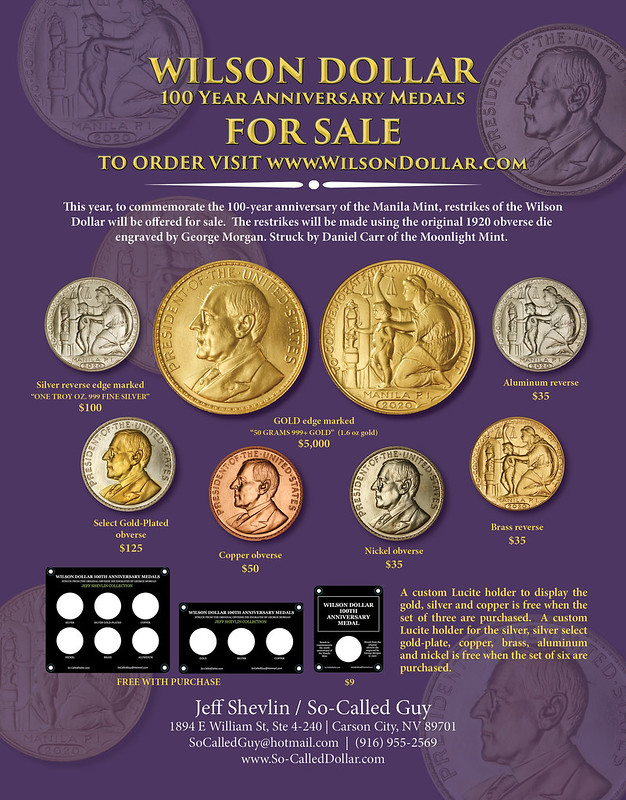
CHARLES DAVIS NEW TITLES IN STOCK
Numismatic literature dealer Charlie Davis writes that he has a number of new titles in stock. -Editor
It is the beginning of a New Year, and a flood of new titles is coming into stock.
C4 has just published The History and Coinage of Machin's Mills by Messrs Howes, Rosen and Trudgen, covering one of the previously least documented areas of colonial numismatics. In its 6x9" format, it is designed to be easier to take to a show (whenever they restart) than the more traditional 9x12" size. It is available on our web site at $65.00
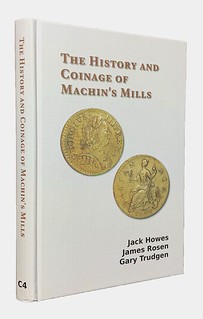
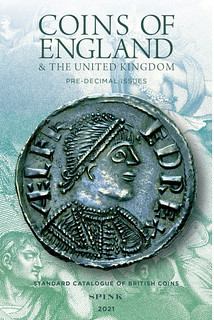
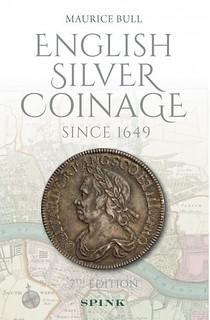
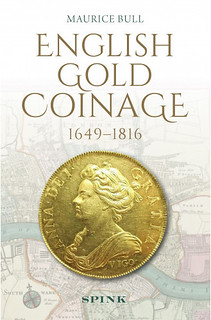
In addition, Spink has come out with new editions of 1) The Coins of England Pre-Decimal ($45.00); 2) The Coins of Scotland, Ireland and Anglo-Gallic ($55.00) and 3) Maurice Bull's English Silver Coinage, 7th edition ($75.00). Also by Bull is, for the first time, a companion English Gold Coinage ($75.00).
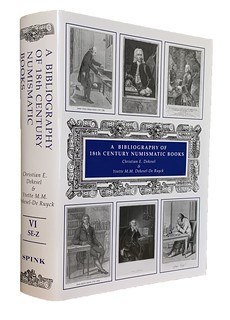
Dekesel's Bibliography of 18th Century Numismatic Books is now complete with the publication of Volume VI ($200.00). Andrew Burnett's magnum opus The Hidden Treasures of this Happy Island - A History of Numismatics in Britain from the Renaissance to the Enlightenment in three volumes ($185.00) and Metallurgy in Numismatics Volume 6 ($75.00) are just a partial list of the new titles coming out of London. All are being posted on our web site
Numisbook.com
.
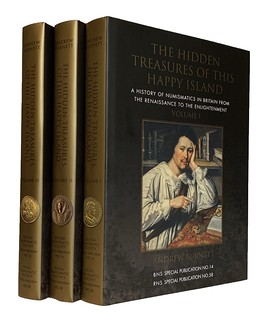
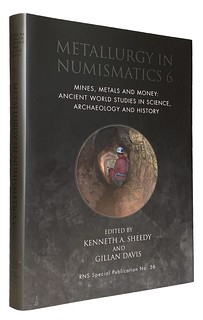
To read the earlier E-Sylum articles, see:
NEW BOOKS: COINS OF ENGLAND 2021
(https://www.coinbooks.org/v23/esylum_v23n49a03.html)
NEW BOOKS: COINS OF ENGLAND 2021
(https://www.coinbooks.org/v23/esylum_v23n49a03.html)
NEW BOOK: ENGLISH SILVER COINAGE 7TH EDITION
(https://www.coinbooks.org/v23/esylum_v23n52a03.html)
NEW BOOK: ENGLISH GOLD COINAGE 1649-1816
(https://www.coinbooks.org/v23/esylum_v23n52a04.html)
NEW BOOK: NUMISMATICS IN BRITAIN
(https://www.coinbooks.org/v23/esylum_v23n35a05.html)
NEW BOOK: METALLURGY IN NUMISMATICS
(https://www.coinbooks.org/v23/esylum_v23n35a06.html)

NEW BOOK: HISTORY AND COINAGE OF MACHIN'S MILLS
A new book has been published on the enigmatic colonial-era coinage of Machin's Mills. -Editor
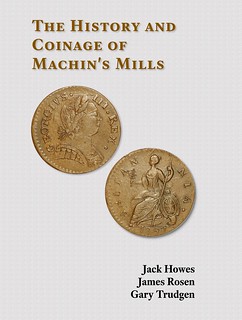 The Colonial Coin Collectors Club (C4) announces the latest in its series of publications – The History and Coinage of Machin's Mills by Jack Howes, James Rosen, and Gary Trudgen.
The Colonial Coin Collectors Club (C4) announces the latest in its series of publications – The History and Coinage of Machin's Mills by Jack Howes, James Rosen, and Gary Trudgen.
When writing a book about coins that have been surrounded for generations by mystery and controversy regarding their sponsors, manufacturers, places and dates of origin, it became inherently obvious that we needed to describe these coins in detail and examine the lives and times of the personalities responsible for their creation during the closing years of the Confederation Period. Not only was it essential to clear up old ideas and to set the records straight, but it seemed necessary to expand our thinking about these coins which have weaved their way into our consciousness of pre-federal coppers.
So begins this new book on the coinage of Machin's Mills. The work, in octavo, is casebound and sewn with a photographic laminate cover, 286 pages and is profusely illustrated in color. It is available immediately for $65 (plus shipping) from either Charles Davis, P.O. Box 1, Wenham, Mass 01984 or Kolbe & Fanning Numismatic Booksellers LLC., 141 W. Johnstown Rd. Gahanna, OH 43230.
David Fanning on this new work:
"The first book-length study of the intriguing series of coppers issued by various parties associated with Thomas Machin. Includes coverage not only of the series collected as Machin's Mills coppers, but also of those Vermont, New Jersey, Connecticut and Massachusetts coppers that are linked to this New York operation."
Charles Davis comments on a draft copy:
"It is obvious that the book is well researched, the photos appear top notch, and the variety descriptions exhaustive -- it is an impressive piece of work."
Congratulations to the author team and C4 for tackling one of the harder remaining mysteries of U.S. colonial numismatics. I'll look forward to the book. -Editor
To order, see:
http://www.numisbook.com/
https://www.numislit.com/
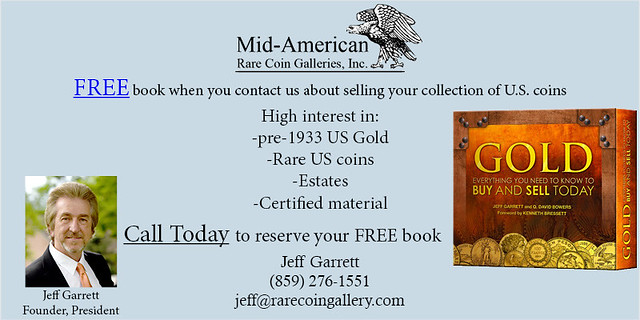
NEW BOOK: FRACTIONAL CURRENCY OVERVIEW
The Currency Proof Club's new book Fractional Currency Overview is ready. Here's the announcement. -Editor
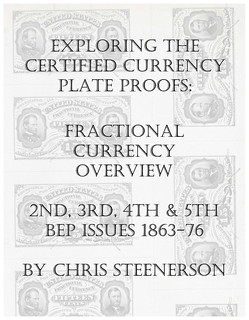 Exploring the Certified Currency Plate Proofs: Fractional Currency Overview - 2nd, 3rd, 4th & 5th BEP Issues - 1863-1876
Exploring the Certified Currency Plate Proofs: Fractional Currency Overview - 2nd, 3rd, 4th & 5th BEP Issues - 1863-1876
by Chris Steenerson
Color or B&W Paperback
8.5x11
144 pages
Color Version $52.99 ISBN-13: 979-8582620549
B&W Version $24.99
ISBN-13 : 979-8588643757
Exploring the Certified Currency Plate Proofs: Fractional Currency Overview - 2nd, 3rd, 4th & 5th BEP Issues - 1863-1876 is a reference work indexing the Fractional Currency issues produced by the Bureau of Engraving and Printing between Oct. 10, 1863 and Feb 15, 1876. This volume is an overview of the second, third, fourth and fifth issues of Fractional Currency. Four larger single issue volumes covering all 1,768 proofs are in the planning stages.
In 1863, Secretary Salmon Portland Chase asked for a new type of fractional currency that was more difficult to counterfeit than the original postage currency issues. The new fractional currency notes differed from the earlier 1862 postage currency issues. They were very colorful with additional printing on the reverse. They incorporated several new measures to discourage counterfeiting. These included overprints, experimental paper, silk fibers, addition of surcharges, blue end paper, and watermarking.
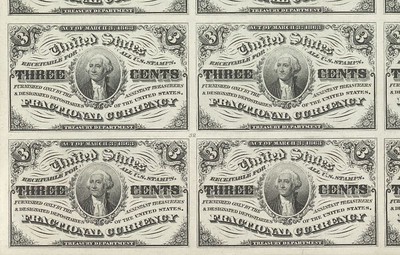
The series will provide a visual tour through the certified plate proofs created by the Bureau of Engraving and Printing and held in the National Numismatic Collection at the National Museum of American History. The Book series is intended for educational use only and to assist future researchers.
Please check back at www.CurrencyProofs.com for new details!
For more information, or to order, please see:
Fractional Currency Overview, Color Version
(https://www.amazon.com/dp/B08QRYXT3D)
Fractional Currency Overview, B&W Version
(https://www.amazon.com/dp/B08RRGMRB2)
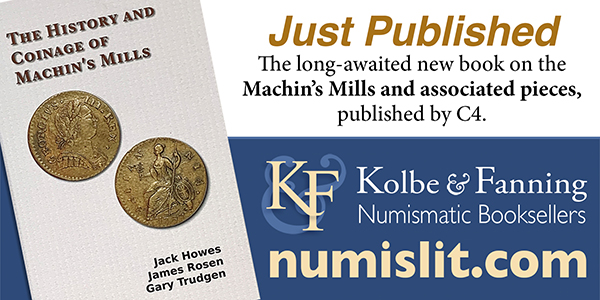
D. WAYNE JOHNSON (1930-2020)
We knew him as Dick Johnson. Richard Wayne Johnson published under the name D. Wayne Johnson but was informally known as Dick. Well known in numismatics as the founding editor of Coin World, important in the early years of the Rittenhouse Society, research director of Medallic Art Company and author of important books on medals and minting technology, he became an early and frequent contributor to The E-Sylum with an unbroken string of weekly contributions that will likely never be surpassed. He passed away December 29, 2020 at the age of 90. He will be greatly missed. Rest in peace.
Dick once wrote that "The E-Sylum is closer to what I wanted Coin World to be originally, somewhat more for the advanced coin collector. Advanced collectors tend to seek more information of auctions and the literature." A sampling of a few of Dick's over 1,000 E-Sylum contributions appears elsewhere in this issue. And with his family's permission, we'll continue the Vocabulary article based on Dick's Encyclopedia of Coin and Medal Terminology. He may be gone, but he won't be forgotten.
Here is an obituary submitted by his family. The first photo shows him in 2010 with his research files. The second one, courtesy of Coin World, shows him and his wife Shirley reviewing the first issue of the newspaper. -Editor
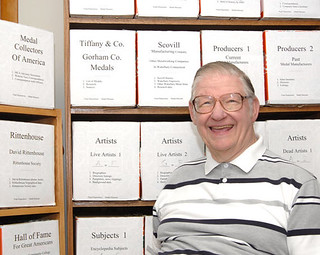 Richard Wayne Johnson passed away, age 90, in New Britain, Connecticut, on Tuesday, 2020 December 29. He was an author, editor, museum official in the numismatic field; author, cataloger, medal publisher in the medallic field. He wrote under the name D. Wayne Johnson for serious material, and under Dick Johnson for brief items (such as The E-Sylum, a weekly internet newsletter for numismatic literature devotees). His research and writing covers American medallic art, coin and medal technology, American medallic artists, future coins, medallic objects, and biographies of select medallic artists. He was an authority on 20th century American medals and the Medallic Art Company, of which he was staff writer-researcher, 1966-77, and, company historian and senior consultant, 2010-17. Author of Monograms of American Coin and Medal Artists (2010), Who's Who Among American Medallists (2015), and An Encyclopedia of Coin and Medal Technology (2016).
Richard Wayne Johnson passed away, age 90, in New Britain, Connecticut, on Tuesday, 2020 December 29. He was an author, editor, museum official in the numismatic field; author, cataloger, medal publisher in the medallic field. He wrote under the name D. Wayne Johnson for serious material, and under Dick Johnson for brief items (such as The E-Sylum, a weekly internet newsletter for numismatic literature devotees). His research and writing covers American medallic art, coin and medal technology, American medallic artists, future coins, medallic objects, and biographies of select medallic artists. He was an authority on 20th century American medals and the Medallic Art Company, of which he was staff writer-researcher, 1966-77, and, company historian and senior consultant, 2010-17. Author of Monograms of American Coin and Medal Artists (2010), Who's Who Among American Medallists (2015), and An Encyclopedia of Coin and Medal Technology (2016).
Richard was born 1930 August 27 in Kansas City, Missouri, to Robert Winfield and Rubye Margaret Marie (Palmrose) Johnson. He was raised in Kansas City, Kansas, and several years in Chicago and Park Ridge, Illinois, and in New Orleans, Louisiana, then back to Kansas City, Kansas. He attended Maccachaque Grade School, in Kansas City, Kansas (third generation to do so, grandfather Penick and father Robert attended same grade school), Irving Park Grade School in Chicago, Illinois, Maine Township Junior High in Des Plaines, Illinois, Alcee Fortier High School in New Orleans, graduating from Rosedale High School in Kansas City, Kansas.
After graduating high school he attended one year at Kansas City Kansas Junior College, dropped out for six months, worked at A&P, returned to college at Baker University in Baldwin, Kansas, 1949 September to December. He joined the Air Force 1950 January 07 with basic training at Lackland Air Force Base, San Antonio, Texas, where he was tested and assigned to intelligence. After training at Brooks Air Force Base also in San Antonio, his squadron flew to Washington, DC, where he was stationed in the National Security Agency for his entire four-year duty during the Korean War. He was discharged 1954 January 07.
In 1951 he attended his first national coin convention in New York City. In 1957 he helped organize a group of young numismatists, the Rittenhouse Society (after first US Mint Director David Rittenhouse). He also helped form a regional coin organization, Middle Atlantic Numismatic Association, and was its first co-editor, with numismatist Walter Breen.
Richard attended Washington University in Saint Louis, Missouri, from 1954 February until 1957 receiving a BS degree in business administration. He served as president of the St. Louis Numismatic Society while still in college and was appointed to the Central States Numismatic Society board of directors.
After graduating in 1957 he joined Reynolds & Reynolds, a printing firm in Dayton, Ohio, for a sales training position. Due to cutbacks he was laid off after six months. He traveled to New York City for employment but chose to return to Kansas City for a classified ad manager job at the Kansas City Kansan (from 1958-59). He married Shirley Rausch of Kansas City, Kansas, in 1959.
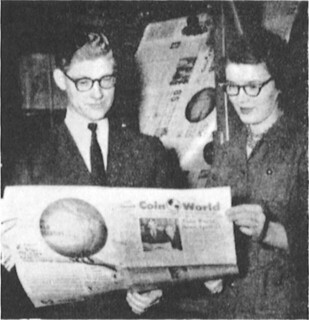 Amos Press hired him to start a weekly newspaper in the coin field, Coin World, first published 1960 Spring. Resigning after eighteen months Richard and Shirley returned to the Kansas City area in 1963 where he started a new publication, Coin Wholesaler, which was in turn sold to a group in Houston, Texas, Space City Numismatics. For this firm he started a new publication, Pace, for coin investors.
Amos Press hired him to start a weekly newspaper in the coin field, Coin World, first published 1960 Spring. Resigning after eighteen months Richard and Shirley returned to the Kansas City area in 1963 where he started a new publication, Coin Wholesaler, which was in turn sold to a group in Houston, Texas, Space City Numismatics. For this firm he started a new publication, Pace, for coin investors.
After an interim job as editor on an engineering publication, Corrosion, he accepted a position with Medallic Art Company, then in New York City, as director of research. Here he did sales research, cataloged the firm's past medallic issues, wrote speeches for the president, William Trees Louth, issued press releases, edited the firm's collector newsletter, The Art Medallist, and other public relations activities. For technical and art aspects of the medallic field he was trained by Julius Lauth, Vice President and Art Director. The pair created a gigantic art medal exhibit mounted in 1968 for the 75th anniversary of the National Sculpture Society. It displayed medals of every NSS member who had created medals.
As part of cataloging the firm's medallic output (first medal 1907) he created an archive collection of 6,121 medallic items (to 1976) the firm had made in its first 70 years. Each medal was photographed, the image entered on a 3x5-inch card along with details of size, composition, artist's and the client's name. (The archive information was later entered in an electronic format by a later owner.)
Working with publications, both national and numismatic, was a major activity in publicizing the firm's medallic output. An example of a numismatic article was "Home of the Art Medal," in Coinage magazine, "Medals of the American Numismatic Society" in Coins magazine, and, on medal technology, "Modern Patinas." For national publications the famed official Inaugural Medals for each new president were always of interest (the firm had produced seven prior to 1969). For the Nixon Inauguration he supplied an Inaugural Medal to Time to place on their cover, a public relations coup to obtain the firm's product on a magazine cover.
For the 1971 centennial of the birth of Victor David Brenner, Johnson and a group of medal collectors mounted an exhibit of Brenner's medallic work. This was on display at the Chase Manhattan Money Museum at Rockefeller Center, New York City. The U.S. Mint furnished Brenner's original models for the 1909 Lincoln Cent, the original galvanos made from the models – first time ever shown outside the Mint since 1910. Also Chief Engraver Frank Gasparro appeared for the opening day with his models and galvanos of his 1959 reverse of Brenner's cent design.
Sales research for the 1976 Bicentennial began in 1970. Medallic Art Company struck the first medal for this national event in 1972 for the Daughters of the American Revolution. The firm moved to a new plant in Danbury, Connecticut, in June that same year. Here, over the next four years, the firm produced Bicentennial medals for 17 American States, 40 cities and other municipalities, and dozens more for private and nonprofit organizations.
For collectors and medal enthusiasts Johnson wrote articles in The Art Medallist on bicentennial medal issues. In 1976, following the July 4th Bicentennial celebration, the firm's medal sales dropped to the former 1970 level. New ownership of the firm cut production staff, scaled back and sold Johnson 64,000 unwanted medals.
With a medal collector friend, Chris Jensen, the pair formed a partnership, Johnson & Jensen, began dealing in medals and medallic art, Spring 1977. They incorporated in 1983 as Medallion House Inc. They had booths at numismatic shows but found auction sales more effective. The pair conducted 27 auction sales 1978-85 offering 27,000 lots of American art medals and related material. The pair published a major pamphlet on Inaugural Medals, other pamphlets on So-Called Dollars, and Circle of Friends of the Medallion, in addition to specialized medal reports and auction catalogs.
In 1985, the partnership dissolved, Johnson later became executive director of Collectors Auctions Ltd, for a group of investors. He cataloged and conducted another eight auctions, 1987-90. After these 35 auction sales he retired to write about medallic art, artists and the technology of coins and medals.
He served as publicity consultant to Medallic Art Co. for both Ronald Reagan Inaugural Medals (1981, 1985). He has appraised medal collections for estates, auction houses, collectors, museums, banks, and widows. He has cataloged some of the Tiffany & Co medal collection, the Marqusee collection donated to the Herbert F. Johnson Art Museum at Cornell University, the Wolfing Collection of Miami, Florida, and others.
His 1998 film script, The Medal Maker, on sculptor Laura Gardin Fraser, was narrated by Elizabeth Jones, former Chief Engraver of the U.S. Mint. It was made into a commercial video by Hollywood film producer Michael Craven.
In 2005 he served as medal consultant to the Carnegie Hero Fund Foundation for the yearly award medals and the Andrew Carnegie Centennial Medal. Also in 2005 he was named to the board of directors of the Gallery Mint Museum of Eureka Springs, Arkansas. In 2006 he was named Curator of Numismatic Art at the Belskie Museum in Closter, New Jersey; here he cataloged the medallic work of sculptor Abram Belskie, for whom the museum is named. In 2007 he created a method for judging art medals at medallic exhibitions with the first at the international exhibition, FIDEM, at Colorado Springs, September 2007. In 2008 he cataloged the studio collection of Marcel Jovine in preparation of a book on this Italian-American medallist, with a catalog of medallic items by Johnson. In 2009 he cataloged the studio collection of Joseph DiLorenzo for the DiLorenzo family.
Also in 2008 he joined forces with numismatist Mark Schlepphorst to come out of retirement and form the firm Signature Art Medals (incorporated, Delaware, November 2008). The firm's first issue was a medallic plaquette honoring both Abraham Lincoln and Victor David Brenner, creator of the Lincoln Cent. The commemorative plaquette was issued for the 2009 Bicentennial of Lincoln's birth and the Centennial of the Lincoln Cent. Four additional medallic items were issued with a theme of Abraham Lincoln. The firm also publishes medal related lithographs and published medallic books.
On May 1, 2010 Johnson was named Corporate Historian to Medallic Art Company of Dayton, Nevada, the firm he worked for a decade 33 years previous. His knowledge of medals and a history of the firm, its personnel and products led to this appointment. In this position he advised management, wrote a weekly report, answered inquiries from the public and collectors, and compiled a history of the firm for a book on the subject. Medallic Art Company went bankrupt in 2017.
His opinion piece advocating abolishing the cent and nickel which was published in the Wall Street Journal in 2013 January led to two items on National Public Radio.
He received the Central States Numismatic Association Medal of Merit 1962.
On the 50th anniversary of Coin World, the current editor wrote the first of a five-part history of the publication revealing Johnson's role in the creation of the weekly news hobby publication in 1960. In August 2012 he was awarded the Carl A. Carlson Award for Cataloging by the Medal Collectors of America.
His family's residences have included Kansas City, Kansas; Sidney, Ohio; Houston, Texas; White Plains and Harrison, New York; Danbury, Southbury, Middlebury, Litchfield, and Torrington, Connecticut.
He is survived by his wife Shirley; three children Jeffry (and Andrea (Olson)), Sandra (Johnson) Carazza (and Alan Ross), and Rhonda (Johnson) Rajcula; and grandchildren Andrew and Dominic Carazza; Jacob, Matthew, Samuel, and Thomas Rajcula; and Dylan Johnson. He was predeceased by his parents and his sister, Roberta Marie (Johnson) Jones, and son-in-law Peter Rajcula.
A memorial gathering in his honor will be scheduled at a later date.
- https://nnp.wustl.edu/library/PersonDetail/519080
- http://dickjohnsonsdatabank.com/d-wayne-johnson-biography.html
- https://www.medalcollectors.org/discover/guides
- https://medalblog.wordpress.com/about/
- https://www.wsj.com/articles/SB10001424127887323374504578223484113806430
- https://www.npr.org/2013/01/19/169723296/a-thought-thats-worth-more-than-a-penny-or-a- nickel
- https://www.npr.org/sections/thetwo-way/2013/02/04/171069240/canada-bids-its-penny- goodbye-should-the-u-s
WorldCat entries:
- https://www.worldcat.org/title/current-valuations-a-price-supplement-to-so-called- dollars/oclc/8519583&referer=brief_results
- https://www.worldcat.org/title/gorham-company-medals/oclc/865711079&referer=brief_results
- https://www.worldcat.org/title/monograms-of-american-coin-and-medal-artists-monograms- initials-and-other-marks-found-on-american-numismatic-items-identifying-the-artists-designers- diesinkers-medalists-makers-and-issuers-of-coins-medals-tokens-decorations-and-plaquettes- made-in-america-since-1776/oclc/770706417&referer=brief_results
- https://www.worldcat.org/title/home-of-the-art-medal-an-exclusive-coinage-tour-through-the- historic-medallic-art-company/oclc/40129820&referer=brief_results
- https://www.worldcat.org/title/whos-who-among-american-medallists-the-artists-of-our-countrys- coins-and-medals-1652-to-date/oclc/922970632&referer=brief_results
- https://www.worldcat.org/title/american-artists-engravers-diesinkers-and-sculptors-of-coins-and- medals-1652-to-date-a-databank-check-list/oclc/1012853127&referer=brief_results
- https://catalog.loc.gov/vwebv/search?searchCode=LCCN&searchArg=57008605&searchType=1&permalink=y
- https://catalog.loc.gov/vwebv/search?searchCode=LCCN&searchArg=2015275229&searchType=1&permalink=y
Some additional notes:
The Kansan published his first newspaper article, an interview with Rev. Arthur B. Coole, author of A Bibliography on Far Eastern Numismatics. The article told of his numismatic activities in China and a little bit about his collection.
Dick designed two medals for the Rittenhouse Society - the Eric P. Newman Centennial Medal in 2011, and Ken Bressett's 50th Anniversary as RedBook Editor Medal in 2012.
For five decades Dick suffered with a rare condition called Inclusion Body Myositis (I.B.M. for short) which causes muscle cells to deteriorate in the legs and other locations in the body. He began having weakness in his legs in the 1980's and progressed to occasional falling which led to using a wheelchair for mobility by 2008. More recently, Dick's IBM condition had spread to the muscles in his throat, affecting his ability to talk. He spent the bulk of his time reading. -Editor
For more on Dick's life, see the bio on his Medal Artists site:
D. Wayne Johnson - Biography
(http://www.medalartists.com/d-wayne-johnson-biography.html).
... and this article by Pete Smith in the Summer 2003 issue of The Asylum, available on the Newman Numismatic Portal:
Recollections of D. Wayne Johnson as told to Pete Smith
(https://nnp.wustl.edu/library/book/510102)
Here are several photos.
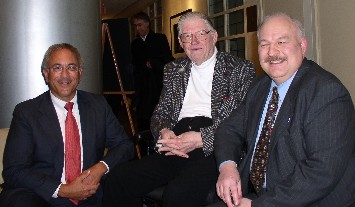
Don Scarinci, Dick Johnson, George Cuhaj at
2009 Dorskey lecture honoring Marcel Jovine (Cuhaj photo)
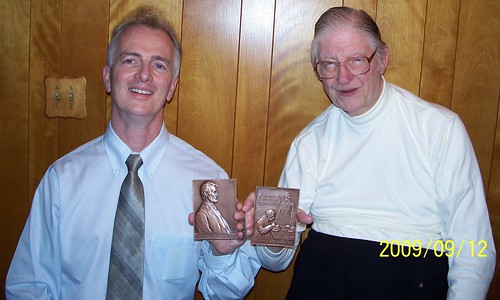
2009: Mark Schlepphorst and Dick Johnson
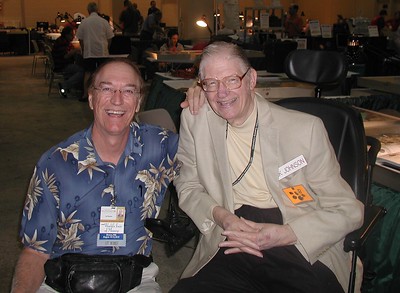
2010: Jeff Shevlin and Dick Johnson at Boston ANA (Jeff Shevlin photo)
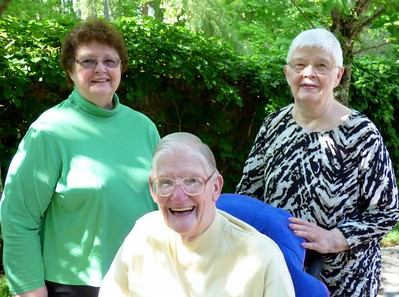
2015: Beth Deisher, Dick and Shirley Johnson in Greenwich, CT
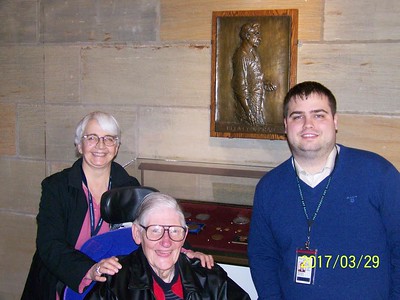
2017: June Miller, Dick Johnson, Ben Hellings at Yale Art Museum
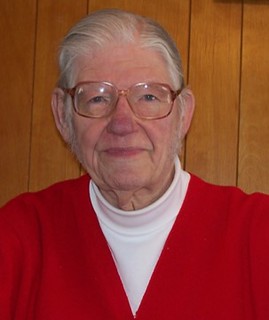
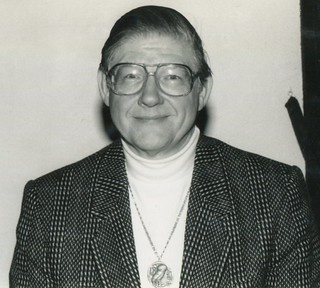
2017 (Len Augsburger photo); undated George Cuhaj photo)
Ken Bressett writes:
"E-Sylum readers will all miss the contributions of columnist Dick Johnson. He was a giant in the world of numismatics and will be mourned by all who ever knew him, or were touched by his influence and vast knowledge. It was my privilege to know both Dick and his wife Shirley for many years. And we lived through a vastly changed world of this hobby like few others will ever experience. Dick was always a leader and innovator in many ways, although he is most widely known for his expertise in the field of medals.
"I first met Dick over 70 years ago at a time when we frequently met at coin shows, along with many other young friends all eager to share our common interest and learn more about the hobby. Among that group were Q. David Bowers, Walter Breen, Eric Newman, Grover Criswell, as well as Dick and myself. In time we formed an alliance we called the Rittenhouse Society, a group that now includes about 100 prominent numismatists, and still meets annually at ANA conventions.
"Shirley commented to me in a recent letter: "We were pleased to get your Christmas card. It is such a pleasure to keep up with old friends. Unfortunately, we never know what is around the corner. You and Dick go way back, way before we got married in 1959. I didn't get to meet you and Bertha until 1960 or 1961. We were fortunate to have celebrated our 61st wedding anniversary together – no other visitors were allowed due to COVID."
"Dick will live forever in our hearts, and his contributions will continue to serve collectors for generations to come. RIP dear friend."
Harry Waterson writes:
"I met him only once. He was a force of nature.
"We first began corresponding in 2001. I was just then at the beginning of my journey collecting and cataloging the medals of Julio Kilenyi. He sent me his list of medals by Kilenyi. I picked up the list and ran with it. Since Dick had set for himself the task of listing every medal ever struck in the United States, his lists on occasion had little bits of error here and there, and in the case of the Kilenyi list, quite a few medals that shouldn't have been there at all. Isadore Konti had been confused with Julio Kilenyi. As well as Jeno Jzusko. I would point these out as we went along and Dick would put the corrections in a box marked K. His list creation skills were monumental; his clean-up skills after the list had been created, not so slick.
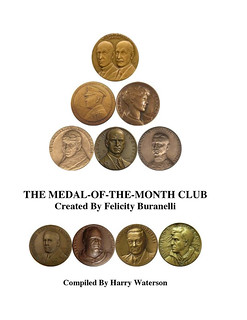 "In 2010, I became aware that a number of medals struck by Medallic Art over more than 30 years by some wonderful medallists was actually a series. This got his attention, he heard me out, he renumbered the 12 medals involved in his MACo format as a series, and then made me write a book about the series. Besides being a force of nature, he was also a witch. The book was published in 2012.
"In 2010, I became aware that a number of medals struck by Medallic Art over more than 30 years by some wonderful medallists was actually a series. This got his attention, he heard me out, he renumbered the 12 medals involved in his MACo format as a series, and then made me write a book about the series. Besides being a force of nature, he was also a witch. The book was published in 2012.
"In the summer of 2015, I did a road trip of the northeast, researching Kilenyi. I spent August 23rd in Dick's company in Torrington, CT. He was wheelchair bound, feeding himself thru a tube and tried to tell me everything he knew about Kilenyi and the companies that struck his medals. He had a young assistant who he would send out to photocopy anything I had an interest in. As I sit here writing this, on a bookstand against the wall is a photocopy of a very rare 11x14-in. Whitehead & Hoag salesman's catalog that came my way that day. Shirley, Dick's wife, came home from work late in the afternoon and we all went out to dinner. Two of us ate and drank but Dick didn't, he just had the best time being the interlocutor, the storyteller and the benevolent host.
"Two weeks later, I was in the Tiffany Archives in Parsippany, NJ at Dick's behest. Dick has done a catalog of the medals of Tiffany, gleaned from anywhere and everywhere. He had done some research at Tiffany and saw for himself a wall of about 80 shoeboxes that he was told contained all the medallic records of the company. After years of negotiating, Dick finally got access to the archive. Dick had hired a graduate research student from Rutgers who was to work one day a week at the Archive and go through all the shoeboxes and update, amplify and take pictures of each medal for his catalog. I was there that first day to help get the process started. "After an hour with the material in the archive, I made one of the worst phone calls of my life. I called Dick to tell him the shoeboxes contained just the shopfloor orders. About 1,000 to a box. The orders were to strike X number of medals, what the cost was and where they were to be delivered in the company. They were in chronological order so unless you knew when a medal was struck, there was no way to tie a shopfloor order to a medal. I had to tell him that at best he would be spending a lot of money to only learn mintages. I knew how bad I felt making that call; I can only imagine how disappointed Dick was at the news. He still thanked me. As I said, a force of nature.
"Two years ago, I got a note from Shirley to say that Dick was unwell and ask if I would take over his Producers Lists. Keep them updated. Could I say no? Not bloody likely. Of course not. Did I mention he was a bit of a witch? The discs arrived and their folders have been on my computer home page ever since winking at me if I do not add something to them every day. I do wonder what other numismatic dispositions Dick made over the last two years. Time will tell.
"I have poked holes in the accuracy of some of Dick's lists that I have been exposed to over the years. It is easy to do. The hard part is creating the catalog list in the first place. Dick did the heavy lifting. Once the list exists, then we can come along and fix it, reorganize it, reinterpret it, and maybe by some miracle even complete it. Dick Johnson was a giant of Medallic Art in every sense of the term and his numismatic legacy will be the cornerstone of medallic research for decades to come."
To read the earlier E-Sylum articles, see:
NEW BOOK: THE MEDAL-OF-THE-MONTH CLUB
(https://www.coinbooks.org/esylum_v15n26a02.html)
MORE ON THE MEDAL OF THE MONTH
(https://www.coinbooks.org/esylum_v15n28a14.html)
Jeff Shevlin writes:
"I don't really recall when I first met Dick Johnson in person, but we were already good friends having communicated for years on various projects that either he or I were working on. I was honored that Dick agreed to write the foreword to the first book I published in 2013, "Discover the World of Charbneau So-Called Dollars". It was worth buying the book just to read his foreword.
"I believe a true friend is someone who has a positive impact on your life. In 2013, after leaving the American Numismatic Association as their Executive Director, I received a phone call from Dick. He said "Jeff, I want you to be my boss". At the time he was the Historian for Medallic Art Company. Dick made the arrangements and I ended up flying to Seattle, meeting with the owner, and moving to Dayton, Nevada as Director of Special projects, a place I would have never gone to, but grew to love. Dick had an enormous positive impact on my life, and I can never thank him enough. We grew to be dear friends and I miss him greatly. "
Donald Scarinci writes:
"I first met Dick Johnson in the early 1990's when I began researching the Society of Medallists medals. Dick gave his time and his knowledge selflessly before he even knew how serious I was about medals. Together, we went on to uncover a great deal of information about the Society of Medallists medals, the Brookgreen Gardens medals and other products of the Medallic Art Company. On some occasions we recorded interviews with key players involved with these medals not long before they died.
"Dick always said that he was a collector of information. I remember the first time I saw a working copy of Dick's "Encyclopedia of American Medallic Artists" It did not take me more than an hour to realize that Dick handed me his magnum opus, his life's work. Dick Johnson successfully created the ultimate catalog of American medals through the 21st century. The catalog contains listings of over 3,000 American medallic artists, a brief biography, a listing of their medals and a listing of known auction appearances and exhibits of each medal. When it is finally released in a proper format it will be a fitting legacy to Dick Johnson, the cataloger who collected information."
Besides Coin World, the catalogs of Johnson & Jensen, and the Medallic Art Company newsletter The Art Medallist, Dick published a number of important books.
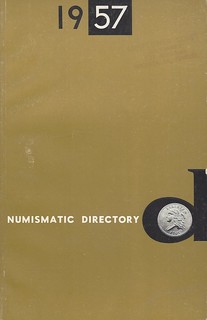
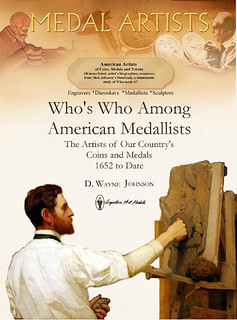
Numismatic Directory 1957
Who's Who Among American Medallists
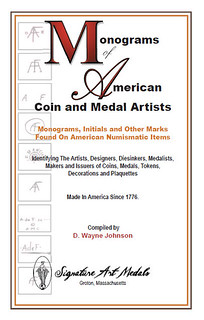
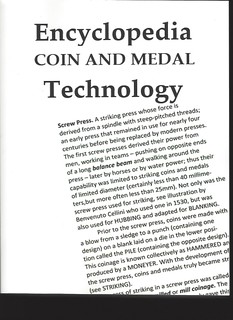
Monograms of American Coin and Medal Artists
An Encyclopedia of Coin and Medal Technologys
To read earlier E-Sylum articles, see:
DICK JOHNSON VISITS THE E-SYLUM
(https://www.coinbooks.org/esylum_v07n42a01.html)
ORTION OF SCOVILL ARCHIVES SAVED FROM DESTRUCTION
(https://www.coinbooks.org/esylum_v09n15a15.html)
DICK JOHNSON AND DONALD TRITT, WOODEN MEDAL EXPERT
(https://www.coinbooks.org/esylum_v09n38a08.html)
DICK JOHNSON'S SCHULMAN-FAROUK ARCHIVE
(https://www.coinbooks.org/esylum_v10n36a06.html)
DICK JOHNSON REPORTS FROM THE COLORADO SPRINGS FIDEM CONGRESS
(https://www.coinbooks.org/esylum_v10n38a09.html)
DICK JOHNSON: NEW MEDAL, NEW BUSINESS, FINAL PART
(https://www.coinbooks.org/esylum_v12n43a09.html)
DICK JOHNSON ON ADVERTISING AND THE HOBBY IN THE 1960S
(https://www.coinbooks.org/esylum_v13n14a07.html)
MEDALLIC ART COMPANY APPOINTS DICK JOHNSON CORPORATE HISTORIAN
(https://www.coinbooks.org/esylum_v13n23a11.html)
DICK JOHNSON REMINISCES: TYPE DRAWERS AND PRINTING
(https://www.coinbooks.org/esylum_v15n03a07.html)
DICK JOHNSON ON NUMISMATIC PERIODICAL PUBLISHING
(https://www.coinbooks.org/v20/esylum_v20n03a05.html)
DICK JOHNSON: SO WHERE'S THE INAUGURAL MEDAL?
(https://www.coinbooks.org/v20/esylum_v20n07a26.html)
DICK JOHNSON VISITS THE YALE ART MUSEUM
(https://www.coinbooks.org/v20/esylum_v20n14a16.html)
NEWMAN PORTAL ADDS JOHNSON ENCYCLOPEDIA
(https://www.coinbooks.org/v20/esylum_v20n15a10.html)
DICK JOHNSON ON ARTIST INSPIRATIONS
(https://www.coinbooks.org/v21/esylum_v21n05a14.html)
DICK JOHNSON WELCOMES QUESTIONS FROM READERS
(https://www.coinbooks.org/v22/esylum_v22n11a14.html)
DICK JOHNSON REMEMBERS FRANK KATEN
(https://www.coinbooks.org/v21/esylum_v21n39a12.html)
MEDALLIC ART COMPANY APPOINTS DICK JOHNSON CORPORATE HISTORIAN
(https://www.coinbooks.org/esylum_v13n23a11.html)
MORE ON VICTOR DAVID BRENNER SCULPTURES
(https://www.coinbooks.org/v23/esylum_v23n37a18.html)
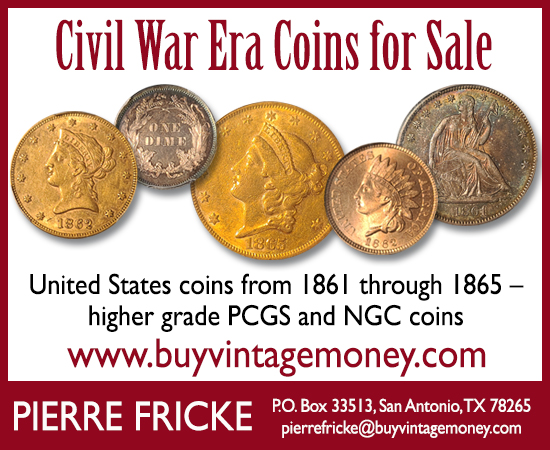
HISTORY OF THE METRIC SYSTEM CONTROVERSY
The latest addition to the Newman Numismatic Portal is a history of the metric system in the U.S. Project Coordinator Len Augsburger provided the following report. Thanks. -Editor
History of the Metric System Controversy
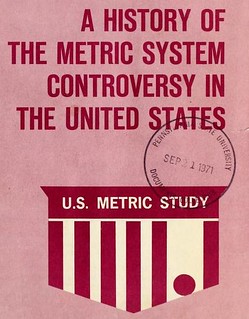 Numismatists tend to score higher in age demographics, and many readers will no doubt recall the 1970s metric system discussion in the United States. The Commerce Department created a number of studies at the time, few of which led to any substantial changes in the day to day lives of ordinary Americans, who continued to accumulate pounds (not the monetary kind), drive more miles, and drink gallons of sugary soda. Newman Portal recently added one of these studies, A history of the metric system controversy in the United States : U.S. metric study interim report, published by the U.S. Department of Commerce in 1971.
Numismatists tend to score higher in age demographics, and many readers will no doubt recall the 1970s metric system discussion in the United States. The Commerce Department created a number of studies at the time, few of which led to any substantial changes in the day to day lives of ordinary Americans, who continued to accumulate pounds (not the monetary kind), drive more miles, and drink gallons of sugary soda. Newman Portal recently added one of these studies, A history of the metric system controversy in the United States : U.S. metric study interim report, published by the U.S. Department of Commerce in 1971.
Thomas Jefferson considered the question of decimal coinage and measures together, noting "...the citizens of the United States may be induced to undertake a thorough reformation of their whole systems of Measures, Weights and Coins, reducing every branch to the same decimal ratio..." Jefferson got his way with the coinage in the Mint Act of 1792, but was unsuccessful in driving this further into other areas, and this report serves as a useful summary of the abortive attempt to unite all of the U.S. measures around a decimal standard.
Link to History of the Metric System Controversy on Newman Portal:
https://nnp.wustl.edu/library/book/593538
THE BOOK BAZARRE
VIDEO: THE ROARING 1980'S COIN MARKET
These are selections from the David Lisot Video Library that feature news and personalities from the world of coin collecting. David has been attending coin conventions since 1972 and began videotaping in 1985. The Newman Numismatic Portal now lists all David's videos on their website at:
https://nnp.wustl.edu/library/multimediadetail/522852
Here's one on the crazy, high-flying coin market of the 1980s. -Editor
Coin Tales from the Roaring 1980's Coin Market. June 1, 2016.
VIDEO: 17:38
John Highfill, Founder, National Dollar Roundtable,
David Lisot, Interviewer, CoinTelevision.com.
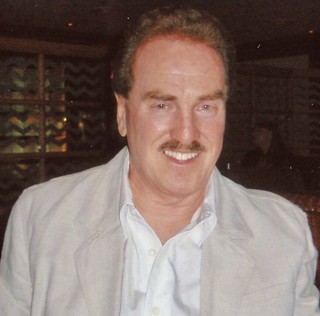 John Highfill was one of the most important marketmakers in all of numismatics in the 1980's. His bids for silver dollars helped create a boom for the entire industry as he supplied retailers with coins for their customers. Hear the tales of him attending more than 50 coin shows a year, how he bought an 1892-S Morgan in MS66 and lost money, how he participated with the PCGS Finest Known Morgan Collection, collections he has had, his company with 28 employees, his commitment to the CC Morgan market, the sale of a $50 Humbert Gold coin, how he took a bad check for over a million dollars and much more.
John Highfill was one of the most important marketmakers in all of numismatics in the 1980's. His bids for silver dollars helped create a boom for the entire industry as he supplied retailers with coins for their customers. Hear the tales of him attending more than 50 coin shows a year, how he bought an 1892-S Morgan in MS66 and lost money, how he participated with the PCGS Finest Known Morgan Collection, collections he has had, his company with 28 employees, his commitment to the CC Morgan market, the sale of a $50 Humbert Gold coin, how he took a bad check for over a million dollars and much more.
An excerpt of the video is available for viewing on the Coin Television YouTube Channel at:
https://youtu.be/L4O1MdIixSk

SECOND PHILADELPHIA MINT IMAGE QUESTION
David Sundman had a question about the images in Pete Smith's submission about the 2nd Philadelphia Mint's neighbor, the 7th Presbyterian Church. -Editor
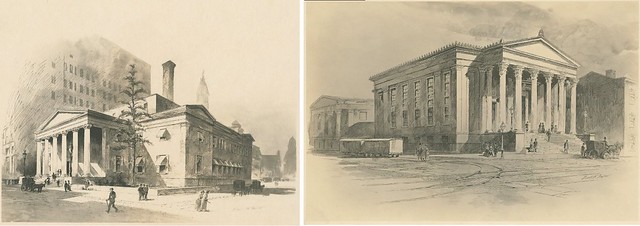
The description of the building on the left of the 2nd image is puzzling to me. Pete stated:
"I was not familiar with the building on the right. It was built as the 7th Presbyterian Church at the southeast corner of Broad and South Penn Square. Its back was next to the Second Mint which can be seen at the left side of the image."
The building on the left side of the 2nd image (the church) has only four pillars while the 2nd Mint front had six pillars. Is it really the 2nd Mint on the left side of the image, or some other building?
The distant building in the second image is indistinct and I hadn't bothered counting the columns. Is the Mint building oriented the same way in both images? Are we looking at the same street, or is that a different side of the Mint building? -Editor
Pete writes:
"The picture of the Second Mint shows the south entrance facing Chestnut Street with six columns. The picture of the church shows the north entrance facing Penn Square. I don't have a picture of that entrance, I suspect that entrance also has six columns and the engraving leaves out some detail."
Thanks for the clarification. We could still use an answer to Pete's original question, though: Can any E-Sylum reader identify the first place the Mint image on the left was published? -Editor
To read the earlier E-Sylum article, see:
QUERY: SECOND PHILADELPHIA MINT IMAGE ORIGIN
(https://www.coinbooks.org/v23/esylum_v23n50a13.html)
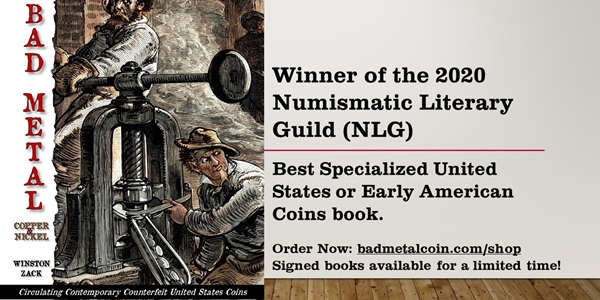
MORE STORIES OF UNNAMED COIN SOURCES
Two members of my Northern Virginia numismatic social group Nummis Nova chimed in about the story of Dreifus-Rosenthal 1804 dollar said to have appeared in Alexandria, VA. First, Dave Schenkman. -Editor
"Pete Smith's comments about the black man who had an 1804 silver dollar reminded me of an article I wrote for the Civil War Token Society in 2017 on the life of Henry Clay Ezekiel. His obituary notice in the November 1930 issue of The Numismatist cites a 1911 biographical sketch in which he related that
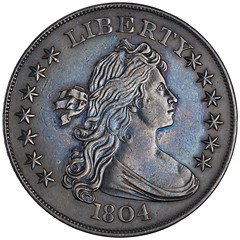 "... he became interested in coins while living in Richmond and that he became acquainted with Edward Cohen, who was in the banking and brokerage business in that city. One day while in the banker's office (about 1860) a Negro brought into him a lot of silver coins among which he found an 1804 dollar. Mr. Cohen later sold the dollar to his uncle, Col. M. J. Cohen, of Baltimore, for $100. This dollar became the Colonel Cohen 1804 dollar, one of the dozen or so known specimens of this date that many collectors regard as originals."
"... he became interested in coins while living in Richmond and that he became acquainted with Edward Cohen, who was in the banking and brokerage business in that city. One day while in the banker's office (about 1860) a Negro brought into him a lot of silver coins among which he found an 1804 dollar. Mr. Cohen later sold the dollar to his uncle, Col. M. J. Cohen, of Baltimore, for $100. This dollar became the Colonel Cohen 1804 dollar, one of the dozen or so known specimens of this date that many collectors regard as originals."
I found it interesting that two black men in Virginia owned 1804 dollars."
Um, yeah. Pete was careful to note that "These discoveries do not prove that Dreifus owned an 1804 dollar, but they do prove there was a man and location that match the Bosbyshell story." Next up, Bill Eckberg. -Editor
This Dreifus story made me laugh. It has too much in common with the legend of the Collins hoard of 1828 half cents.
The following is excerpted from my book, The Half Cent 1793-1857. The Story of America's Greatest Little Coin.
Henry Chapman wrote the following in his 1918 catalog of the Jackman collection: [Lot 879, an UNC 1811 half cent] was discovered in 1884, being brought by an old colored woman of Alexandria, VA., to Mr. Benjamin H. Collins of Washington [DC], to whom she stated she had a bag of them! He, thinking there was not any mistake about the hoard, sold it to S.H & H. Chapman for $3! with the remark, "How many more will you take?" We said the lot. The woman subsequently brought him the bag, but to his astonishment they were all 1828 13 stars! and it has always been a mystery to me that an 1811 equally fine as the 1828s should have been in with the later date, and that her pick at random should have alighted on the only 1811 in the bag! It was subsequently sold in the Warner Sale, $67 and there bought by Mr. Jackman.
Walter Breen wrote about this hoard as did Q. David Bowers. Both of them "corrected" some of this information. Breen reported having seen a remnant lot of 140 red UNCs in 1955, making the 1,000-coin number most probable. Both wrote that Collins sold the 1811 to the Chapmans for $18, not $3, that the Jackman 1811 half cent was not from the Warner Sale, and that the woman brought the coins to Collins in 1894, not 1884, as they believed that Collins was not a coin dealer until after his retirement in 1894. Breen also wrote that Collins sold the coins for 40¢ each. "An old colored woman" brought the bag, which also contained the finest known 1811 1-A, to the Washington, DC shop of Benjamin H. Collins? In 1884 or 1894? Of course! That happens all the time. We can be sure there was a bag that came from somewhere. Whether it contained 50, 100 or 1,000 coins is uncertain; all three numbers have been reported, but it was most likely the latter, based on the number of high grade survivors.
Is it likely that "an old colored woman" walked into Collins' shop with 1,000 mint red half cents? Admittedly, they had a combined face value of only $5.00, but a bag of red fifty-six or sixty-six year old half cents when half cents had been removed from circulation at least 27 years before? If you're as skeptical of that story as I am, note that Collins worked for the Treasury Department in Washington, DC until his retirement in 1894, though he was a coin dealer at least from 1884. Where did she get them? How and why would an old woman, presumably not of means, have kept them in pristine condition for so long? And why bring them to Collins so conveniently close to his retirement? Could he have used insider information or connections to get these coins and created a cover story to hide the truth?
Alas, we'll probably never know, but the plot sickens!
Indeed. Junk dealer Dreifus had a name and address. Conveniently, none of these three "colored" sources were given a name or address. We'll never be able to disprove their existence, but we'll never be able to confirm them, either. Colorful backstories are a fact of life in the coin business. But interesting as they are, we have to remain aware that many of them are likely untrue. -Editor
To read the earlier E-Sylum article, see:
JULIUS DREIFUS AND THE 1804 DOLLAR
(https://www.coinbooks.org/v23/esylum_v23n52a16.html)

THE ULYSSES S. GRANT MEDAL FOR VICKSBURG
Last week Len Augsburger wrote about a massive (presumably bronze) medal of U.S. Grant struck at the U.S. Mint in 1894. An example had been struck in gold in 1865. While the whereabouts of the Sellers edge-inscribed 1894 bronze example is still unknown, the gold one is in the Smithsonian Institution. -Editor
Alan V Weinberg writes:
"Regarding the massive 4" diameter gold Congressional Medal of Honor awarded to Gen'l Ulysses Grant for his 1863 Vicksburg Civil War victory, I have actually held this raw in my hand back in 1999. It was stored unseen in a metal cabinet drawer on the 4th floor vault room of the Smithsonian. It rested in a large, dark polished wood box with three-dimensional gold angels on the lid which, when opened, mechanically lifted up the medal to the viewer. It had been donated to the S.I. by Grant's family along with his sword. The medal is now is exhibited sans its impressive custom box (alas - the presentation box is as impressive as the gold medal) behind thick glass in the same massive display as Grant's stuffed horse! "
Thanks! I was unable to come up with a photo of this exhibit, however. I also came up empty searching the Smithsonian collection catalog for either the horse or the medal. There are quite a number of Grant medals in the collection and I was unable to isolate this particular one. However, I was able to locate some relevant images elsewhere. Rather than the National Numismatic Collection, the piece is in the Armed Forces History collection. -Editor
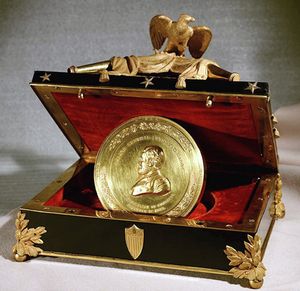
Physical Description
Presentation box of ebony and gold with commemorative medal of well over a pound of gold. On the obverse is a bust of Ulysses S. Grant to left with legend, "MAJOR GENERAL ULYSSES S. GRANT / JOINT RESOLUTION OF CONGRESS / DECEMBER 17. 1863" Thirteen stars and an ornate wreath surround the design.
Specific History
This Presentation medal was given to General Ulysses S. Grant in commemoration of his victories during the Vicksburg Campaign. It was presented by the Congress of the United States.
To read the complete article, see:
Grant's Vicksburg Victory Medal
(https://amhistory.si.edu/militaryhistory/collection/object.asp?ID=284)
Heritage sold a bronzed copper example in 2008. -Editor
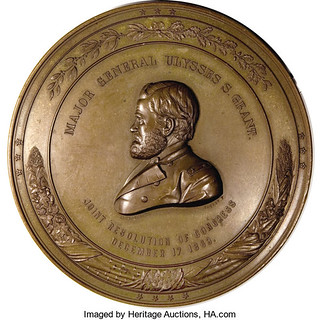
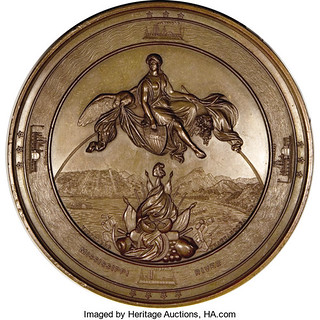
Rare Mint State Large-Size 1863 Ulysses S. Grant
Vicksburg U.S. Mint Medal, Julian-MI-29
Rare Civil War 1863 Ulysses S. Grant Mint Medal, Julian-MI-29, Large Size. Bronzed copper, 105 mm, 10 mm thick, 502 gm. An impressive example of this rare Civil War-era medal, dated December 17, 1863. Obv. bust left, MAJOR GENERAL ULYSSES S. GRANT / JOINT RESOLUTION OF CONGRESS / (date), ornate double-ringed border. ATROBUS D. and PAQUET F. below truncation. Rev. Commerce looking down at views of Vicksburg and Chattanooga, separated by the trophies of war. She bears a shield labeled DONELSON. Designed by Anthony C. Paquet, this piece is technically a medallion (defined as more than three inches in diameter) since it is more than four inches thick. A beautiful example, essentially as made, but with a couple of nicks on the high points of the shoulder of Grant's bust and the forehead. Milk-chocolate, lustrous surfaces with no singular impairments otherwise.
To read the complete lot description, see:
Rare Civil War 1863 Ulysses S. Grant Mint Medal, Julian-MI-29, Large Size....
(https://coins.ha.com/itm/u.s.-mint-medals/rare-civil-war-1863-ulysses-s-grant-mint-medal-julian-mi-29-large-size/a/1100-28165.s)
Alan adds:
"In that same Smithsonian cabinet drawer was a similar box containing a General Winfield Scott Mexican War 90mm Congressional gold Medal of Honor (Julian MI 26) that also mechanically lifted up when the box lid was opened. It was almost as visually astounding as the gold 105mm Grant (MI 29). Strangely the two presentation boxes appeared to be constructed by the same firm, but presumably in 1849 for Scott and then again in 1865 for Grant, a 16 year span.
Stack's auctioned the 90mm MOH gold Zachary Taylor Mexican War medal (Julian MI 24) in a custom silver round case some years ago, I believe during the Norweb auction, to a phone bidder for approx $450K. I was there and wanted it but... John Kraljevich handled the bidder's phone and told me the bidder wanted it only because it had been struck with newly mined California gold!"
To read the earlier E-Sylum article, see:
U.S. GRANT MEDAL STRUCK ON 1000 TONS PRESS
(https://www.coinbooks.org/v23/esylum_v23n52a09.html)
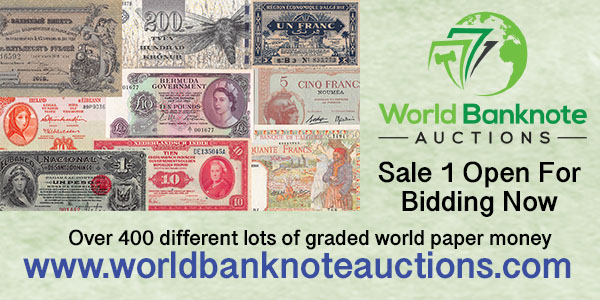
NOTES FROM E-SYLUM READERS: JANUARY 3, 2021
On the Return to Flanagan's Washington Obverse
Dave Lange writes:
"The entry about the new quarter dollar reverse included a comment from Pabitra Saha to the effect that the current quarter dollars have the infamous "spaghetti hair," but this isn't true. In the late 1980s the U. S. Mint did lose sight of the fact that Washington was wearing a periwig, and its sculptors gradually reshaped his hair into what appeared to be strands of noodles. This transformation occurred gradually between 1988 and 1993. This same very unnatural portrait was continued into the state and territory quarters of 1999-2009, albeit with an overall reduction of the bust size. By the time that the America the Beautiful series debuted in 2010 the Mint had become aware of the criticism surrounding the spaghetti hair, and it adopted a fairly accurate restoration of Flanagan's 1932 bust which has continued to the present day.
It's interesting that the Mint's press release of the 2021 quarter dollar shows a return to the offending noodles. I certainly hope that this was just an oversight by the marketing department and not an actual projection of the coin as it will be struck."
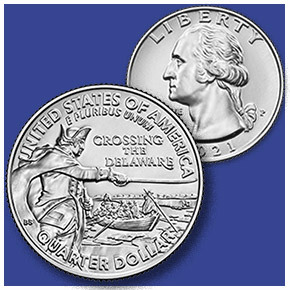
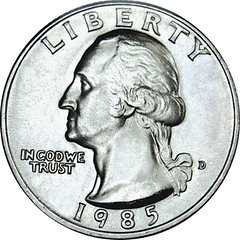
Yes, that image was a little scary, albeit not the full-blown spaghetti hair rendition. Since the obverse was not a focus of the press release, let's hope you're right and it was only a marketing department snafu. -Editor
To read the earlier E-Sylum article, see:
TREASURY CHOOSES NEW QUARTER REVERSE DESIGN
(https://www.coinbooks.org/v23/esylum_v23n52a18.html)
No Retroactive Laws for Medals
Alan V Weinberg writes:
"A law now current or proposed cannot be retroactive in terms of preventing mere ownership or past possession of a Medal of Honor. The Constitution forbids retroactive laws depriving due process in the then-legal possession of property.
What's next - making possession of gold Congressional Medals of Honor illegal? Like the gold Zachary Taylor, or the Cyrus Field currently up for auction?"
To read the earlier E-Sylum article, see:
SENATE BILL WOULD RESTRICT TRADING OF MEDALS
(https://www.coinbooks.org/v23/esylum_v23n52a19.html)
Translating the Dardanelles Overprints Text
An excerpted article last week about the Dardanelles overprints
stated
"The ten shilling notes were overprinted with two lines of Arabic text, the first line reads: "Piastres silver 60", while the second line reads "Piastres silver sixty".
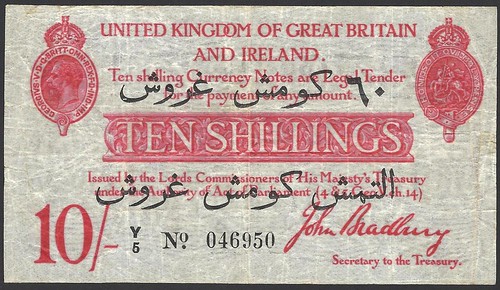
Chip Howell writes:
"This is misleading, in that Ottoman Turkish used a version of Arabic script & the overprint is definitely in Turkish--the spelled-out numbers confirm this. It is read right-to-left, so the translations should read "[60/sixty] silver piastres"."
Martin Purdy writes:
"When I saw the heading to this item I just knew what was coming. For years I've been trying to get cataloguers to reflect the Turkish text on these notes correctly - because Turkish used an Arabic-based alphabet prior to the 1920s, the text reads right-to-left, so what it actually says on the 10/- and £1 notes is "60 (or 120) silver piastres", not "piastres silver 60" (etc).
"The common error in translating this text as if it read from left to right, which seems almost impossible to eradicate now it's so well established, makes about as much sense as translating the country name on Egyptian or Saudi coins as "Arab Egypt of Republic" or "Saudi Arabia of Kingdom", since that's how they look if you view the words in left-to-right order.
"And of course, "overprinted in Arabic" isn't correct either, since the language is Turkish. All this was rectified in SCWPM and the Banknote Yearbook at one point, so I hope it hasn't been "uncorrected" again since :-)"
Thanks, everyone. Makes sense. -Editor
To read the earlier E-Sylum article, see:
THE DARDANELLES OVERPRINTS
(https://www.coinbooks.org/v23/esylum_v23n52a26.html)
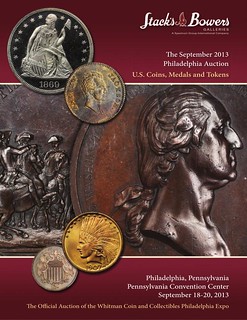 Stack's Bowers September 2013 Philadelphia Catalog Sought
Stack's Bowers September 2013 Philadelphia Catalog Sought
Darryl Atchison writes:
"I am looking for a Stack's Bowers auction catalogue from September 18-20, 2013 and I would be grateful if any of our readers who might have one could contact me by email. I would like to find a hardcopy somewhere. I find it too difficult to do research on screen."
Darryl's address is atchisondf@gmail.com . -Editor
Marika Somogyi
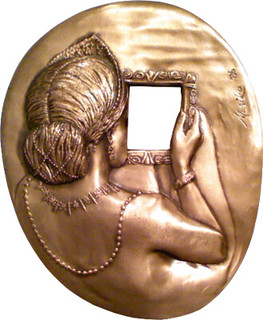
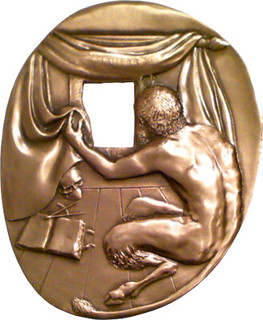
Regarding the earlier-illustrated Society of Medalists medal "showing both beauty and the devil looking into a mirror", Mel Wacks writes:
I suggest that you give credit to the medalist -- Marika Somogyi. Marika also designed several medals for the Jewish-American Hall of Fame -- commemorating Leonard Bernstein, Arthur Miller, and Benny Goodman."
Done - thank you. -Editor
To read the earlier E-Sylum article, see:
VOCABULARY TERM: OPENWORK
(https://www.coinbooks.org/v23/esylum_v23n50a15.html)
Duckpin-Shaped Encased Dimes
Michael Merrill writes:
"My hopeful purchase of a box of old coins resulted in the purchase of no coins, but to the plus was my unexpected buy of this pair of 1968 Jefferson embedded BU dimes, one having concave thumb recess. As is so often said, "you just never know what may come along the pike".
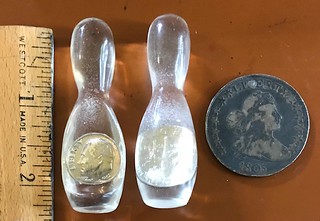
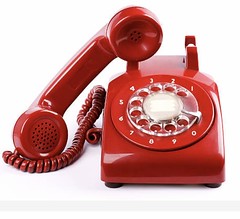
Michael included this image of the duckpin-shaped encased dimes, along with a 1968-era telephone. Remember those? -Editor
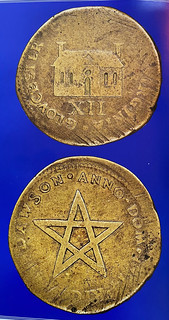 Rare Encased Gloucester Shilling
Rare Encased Gloucester Shilling
Bob Rhue writes:
"I see that in the upcoming Heritage sale of the Partrick collection one of two known Gloucester Shillings is being offered.
If I remember the story correctly it wasn't until the second piece was discovered in 1982 that the complete legends were decipherable between the two incompletely struck pieces.
I recently came across what I assume is an early rendition original pattern from 1714, probably enclosed in Lucite at the time to protect this unique specimen; and I wanted to share it with others who have been sharing photos of their Lucite encased coins."
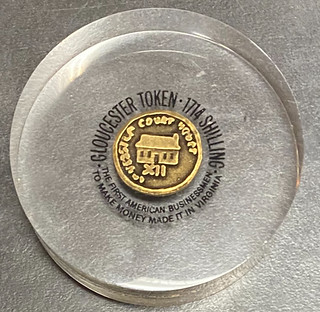
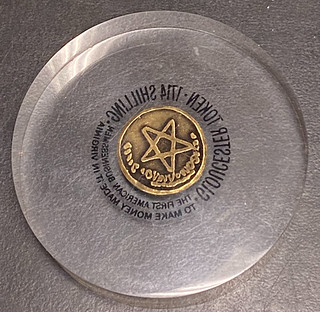
Clever colonists! -Editor
To read earlier E-Sylum articles, see:
MORE LUCITE-ENCASED COINS: SPELLMAN, BEISTLE
(https://www.coinbooks.org/esylum_v17n49a15.html)
COINS IN LUCITE
(https://www.coinbooks.org/v23/esylum_v23n48a11.html)
MORE COINS IN LUCITE
(https://www.coinbooks.org/v23/esylum_v23n49a14.html)

SURVEY RESULTS: COLLECTING PREFERENCES
Readers may recall that back in May, Franky Leeuwerck, a member of the International Bond and Share Society, had a survey running on his blog relating to collector preferences. His survey questions are relevant to all numismatic collections. Beauty, scarcity, historical significance, a good bargain and collection completeness, are incentives for collectors worldwide. Here are the results! -Editor
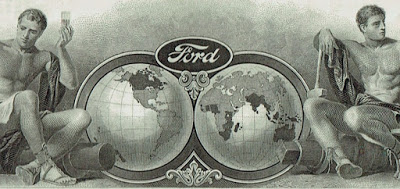
Do you prefer Beauty or are you more satisfied with A Good Bargain? When it comes to collecting what do you prefer?
On the occasion of this blog's 10th anniversary, I launched in May 2020 an online poll about five collecting motives :
- Scarcity
- Beauty
- A Good Bargain
- Collection Completeness
- and Historical Significance.
I believed that the poll questions asked were relevant for banknote, coin, and stamp collectors as well. Thus, I promoted my poll also through the International Bond and Share Society (IBSS) and on a number of numismatic online audiences as well, such as CoinsWeekly, Numismatic Bibliomania Society's E-Sylum newsletter, a IBNS discussion group, and several scripophily Facebook groups.
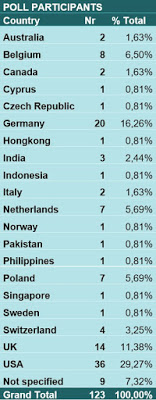 It took a few months, but all together 123 people cast their votes. In addition to questions on collecting motives, I started the poll with some general questions to have a better idea of the participants.
It took a few months, but all together 123 people cast their votes. In addition to questions on collecting motives, I started the poll with some general questions to have a better idea of the participants.
Though poll participation was anonymous, I asked about the participant's country. People responded from at least 20 countries. Top 3 locations were USA, 29%, Germany, 16% and UK, 11%. See the Poll Participants table for the details.
Now what about the collecting motives? Which one is the absolute winner? Do we have the same results for the top 3 locations? Are there any differences between our "starters" and "the experienced" ? Let's find out.
I used the following method to derive a ranking. For each one of the participants I counted how many times a motive was chosen in the participant's comparisons. For example, if someone choose Beauty over Scarcity, then Beauty deserved one point, Scarcity zero. This led to 2460 scores : 123 participants * 10 pair comparisons * 2 motives.
And the winner is...
- Collection Completeness, 332 points
- Historical Significance, 323 pts
- Scarcity, 260 pts
- Beauty, 159 pts
- A Good Bargain, 156 pts
The overall winner in the contest is Collection Completeness, closely followed by Historical Significance.
But the numbers also revealed that there are two nuances.
- The group of the American respondents, 36 of them, however preferred Historical Significance above Collection Completeness.
- When we analyze the results by the number of years a person is collecting, only one motive prevailed. All 15 participants collecting less than 5 years - our "starters" - strongly preferred Historical Significance above all the other preferences.
Who are the tailenders ?
This might be a surprise but Beauty and A Good Bargain are apparently less important than the other ones when it comes to collecting motives. Even more, this finding applies to both our starters and the experienced.
My sincere thanks to all who participated and spread the word. I hope you found it as interesting as I did.
Happy New Year !
To read the complete article, see:
Poll results - Collecting motives
(http://leeuwerck.blogspot.com/2020/12/poll-results-collecting-motives.html)
To read the earlier E-Sylum article, see:
SURVEY: COLLECTING PREFERENCES
(https://www.coinbooks.org/v23/esylum_v23n20a22.html)

2020 BRINGS UNEXPECTED BOOST TO NUMISMATICS
In an email to customers this week, dealer David Kahn of David Kahn Rare Coins wrote about the unexpected and welcome surge in collector activity over the past year despite the loss of in-person hobby events. It's so great to hear that many of our dealers are doing well, and even better to learn of increased enthusiasm and new blood in the market. -Editor
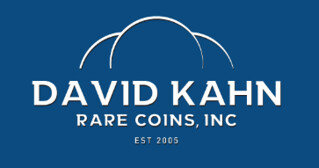 and that is something to celebrate. Ten months of 2020 were - to under-state the incredibly obvious - challenging in many respects. But there is hope and progress on several fronts. At DKRC, we are optimists generally, and especially so at present. Better days are surely ahead. And yet, as I've said many times in this space, there is plenty of good here and now.
and that is something to celebrate. Ten months of 2020 were - to under-state the incredibly obvious - challenging in many respects. But there is hope and progress on several fronts. At DKRC, we are optimists generally, and especially so at present. Better days are surely ahead. And yet, as I've said many times in this space, there is plenty of good here and now.
Among the things we count as good...David Kahn Rare Coins has just concluded our highest sales year ever! If you had asked me where I felt we'd end the year back in late March or early April, I'll admit my projection would have been less than fully optimistic. In all of 2020, we set up at 3 coin shows...FUN in January, the ANA's National Money Show in late February, and a modest, regional show in Gettysburg, PA in September. That was it. Typically, we would have also been at Baltimore in March, Central States in April (which is usually our second highest grossing show of the year, right behind either winter FUN or summer ANA), Baltimore in July, ANA in August, and Baltimore in November, plus a couple of other, smaller shows. Combined, those generally account for roughly 40% of our annual sales. Of course, my concern earlier this year was not just about shows that wouldn't happen, it was primarily how the coin market in general would fare during a global pandemic. My expectations were somewhat dire.
But, something completely amazing happened. Our online sales, both here and on ebay, more than doubled. You, our established, loyal customers were not only buying coins online, you were aggressively pursuing coins online. Melissa and I sincerely thank you for that...for your business, your trust, and your friendship. We clearly understand it is vital for any business to maintain and grow established relationships. But there was much more to the story. We found that collectors were returning to coins after years away, new collectors were coming into the market, and many collectors who hadn't yet dealt with us, did just that. And, it wasn't just us. Virtually all the dealers we network with had similar experiences. This paradigm shift has clearly been great for us, but in a larger sense, it is fabulous for the hobby we love. A larger, more vibrant market is incredibly good for the numismatic community as a whole.
We don't yet understand if this substantial increase in online sales will hold after the return to "normal" - whatever that may be - when collectors can again attend a major show and see and touch untold numbers of coins in one room. But, we think there's a reasonably good chance that the ease of online buying - from proven, trusted sources, who offer excellent images and honest commentary - will continue to serve more of our customer's needs than in years past. The simple reality is that many, if not the vast majority of collectors, now realize that they don't have to travel to a coin show to buy great coins, and do so with confidence.
Still, I'm a traditionalist, and I think most collectors are too. I like a coin show. OK, I love a coin show. There is so much to see, so much to do, challenges to be met, goals to achieve - and most importantly - other, like-minded people to share those experiences with. That is a foundational aspect of collecting that online shopping can never satisfy. I don't think shows are a thing of the past. Maybe that day is coming, but I don't think it is coming particularly soon. I know some interested observers who say that day has already arrived, but I disagree with them. Yes, some of you may choose to stay home, but I firmly believe that shows will be great again.
With regard to coin shows generally, we are not yet out of the woods. FUN was canceled a few weeks back, Long Beach in February and the ANA's March National Money show in Phoenix are officially out, and I have to think there is a zero chance for Baltimore later in March, though no official announcement has been made. In terms of the other majors, if I were to guess at the odds, there is perhaps a small chance of Central States in late April (I sure hope it can go...see my comments above), maybe a modest chance of Long Beach in June, and a darn good chance of Summer FUN in early July. That's where I'm betting the first "major" will be, and I've already reserved a prominent, corner table for that show, which is not one we typically do. But, we're doing it this coming July! I think that pent-up demand for a big show is likely to produce incredible results. Melissa and I both look forward to seeing you there...more than we can tell you!
I have to agree with Dave's forecast that in-person shows will return in time. There's just no substitute for gathering in person with friends new and old over shared interests. While I don't know yet when it will be, I'm looking forward to my next meetings and shows.
Dave and Melissa have some great stock available on eBay and their website, so take a moment to browse with them and all the wonderful advertisers who support this publication. Just click on their ads to be taken to their offerings. Happy hunting, and Happy New Year! -Editor
To view DKRC stock, see:
https://www.ebay.com/str/davidkahnrarecoins
https://www.davidkahnrarecoins.com/
To read earlier E-Sylum articles, see:
CORONAVIRUS COMES FOR THE COIN SHOWS
(https://www.coinbooks.org/v23/esylum_v23n11a11.html)
SMALL SHOWS, LIVELY NUMISMATIC ACTIVITY
(https://www.coinbooks.org/v23/esylum_v23n38a19.html)
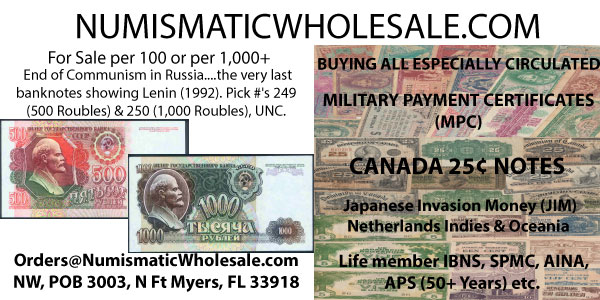
VOCABULARY TERM: COINABILITY
Here's another entry from Dick Johnson's Encyclopedia of Coin and Medal Terminology. -Editor
Coinability The suitability of a metal or alloy to take a sharp, clear, struck impression between dies in a coining press under normal coinage operations, at room temperature (cold coining). Not all metals have the same property of surface displacement that allows surface metal to flow easily into die cavities when struck. Metals ranking high in coinability possess these characteristics and include gold, silver and copper. Alloys ranking high in coinability include bronze, brass, copper nickel, nickel-silver and others. Metals that are hard, brittle, or for other characteristics would rank low in coinability, include steels, zirconium, titanium, and alloys such as nickel-chromium.
Coinage alloys must fill all die cavities with ease during striking, and by surface displacement must flow into these die cavities from the mass of the blank. Ideally this must occur during high-speed coining without excessive die pressures. Although there is some correlation between ductility and malleability to coinability, metals are ranked in coinability only by this ease of moving surface metal into the cavities of coin dies during striking in coining presses.

MARTIN LUTHER BEISTLE (1875-1935)
John Lupia submitted the following information from the online draft of his book of numismatic biographies for this week's installment of his series. Thanks! As always, this is an excerpt with the full article and bibliography available online. This week's subject is businessman, author, and coin dealer M. L. Beistle. I added an image of Beistle's half dollar book. -Editor
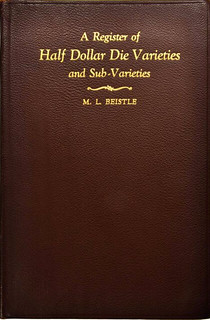 Beistle, Martin Luther (1875-1935), Shippensburg, Pennsylvania. Industrial Magnate, Inventor, Coin Dealer, Numismatist, Author.
Beistle, Martin Luther (1875-1935), Shippensburg, Pennsylvania. Industrial Magnate, Inventor, Coin Dealer, Numismatist, Author.
He was born on June 26, 1875, at Cumberland, Pennsylvania, the fourth son of David W. Pisle Beistle (1810-1884) and Mary Elizabeth "Molly" Redick Redding (1840-1892). The Beistle family comprised four sons : Walter Dewalt; John, William Oliver, and Martin Luther, and three daughters : Bess, Rebecca Jane, and Henrietta. Martin Luther Beistle was their fifth child.
In January 1895, he married Anna Mary Amanda Dewalt (1875-1946), daughter of John Jacob Dewalt (1858-), the radial arm saw inventor. They had five children : Arthur Erwin (1895-1961), Ruth Amanda (1897-1975), Pearl Henrietta (1899-1995), Edna May (1901-1967), and Dorothy Elizabeth (1910-1996). Their first child was born at Pittsburgh, Pennsylvania, where Beistle began his career as a specialty salesman for the Pittsburgh Calendar Company.
Sometime about 1900 he began his business, Beistle Company, as a sideline cottage industry making decorations for hotels, especially artificial plants, in his Cartier's Township home basement factory on Walnut Street, with his wife Anna and brother-in-law. He continued working as a specialty salesman saving the company profits in order to expand into their own factory building.
In 1904, he patented the Medicine Spoon, a spoon that had a bent handle to assist in liquid medication. According to the U. S. Patent Office Beistle filed the patent while living in Ingram, Pennsylvania.
About 1905, he rented the W. W. McBride Paper Company factory where he worked as a salesman at Pittsburg. Late 1905 through 1906, the Beistle Company felt the crunch of the economy during its financial collapse and was forced to close the factory and relocate it returning to his humble origins in his basement. A lawsuit was filed against him on February 21, 1906, for attempting to defraud by evacuating said premises without payment. The original lawsuit by W. W. McBride Paper Company dated back to October 1905. In 1907, he moved his basement factory into his father-in-laws wagon shop. In 1909, he moved into a new factory location in Shippensburg, and began to publish a company catalog of the various novelty and party paper products. In 1910, he began making specialty paper items that catered to the seasonal market, specializing in Christmas decorations. He patented several processes in specialty paper manufacturing.
His coin dealership operated also under the Beistle Company banner.
About 1913, he began to specialize in early American half dollars.
In 1917, he began to manufacture his famous honeycomb tissue paper for use in making various party items and seasonal specialty items like Valentines, and Christmas decorations. In 1919, he added his new line of Halloween items and paper products. In 1921, he added Easter paper product items to his catalog.
He read a paper at the Rochester Numismatic Association meeting held September 19, 1922.
In 1923, he conducted correspondence with David Proskey concerning the Confederate Half Dollar, since Proskey worked for Scott & Co. when they issued the 500 restrikes. Through this correspondence Beistle was able to learn the details about the restrikes.
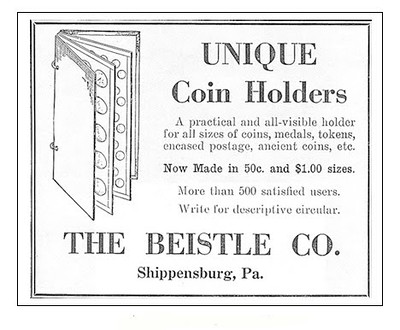
Early 1928, Beistle patented, manufactured and sold the "Unique Coin Holder" the first known cardboard coin-board album leaves that were hole punched to place in ring binders designed specifically for them. A transparent celluloid strip slid under the surface of each row of coin holes and could be pulled out for either the insertion or removal of coins.
In the June 1929 issue of The Numismatist, an announcement gave notice to Beistle's new book expected to be ready for subscribers by June 10th, warning that it will be issued in a limited edition, and a de luxe edition of only 25 copies.
He received his copyright on July 25, 1929 for his book, A Register of Half Dollar Die Varieties and Sub-Varieties; Being a Description of Each Die Variety Used in the Coinage of United States Half Dollars as far as the Issues are Known, Covering the United States Mint at Philadelphia, and Branches at New Orleans, San Francisco, Carson City and Denver. By M. L. Beistle (Shippensburg, Pa., The Beistle company, 1929). Sales of the book began in August and over the next few months was probably crunched by the Stock Market Crash of October 1929.
Beistle used the neologism akcidefet for "clash marks" in his book, probably a conflation of two words modified, the first one derived from the German word for accidental "akzidentale" + the English word effect. Alan Herbert, Coin Clinic 101, says that it was a slang term for accidental die defect. Regardless, the term akcidefet is now considered an archaism and has been replaced with the word "clash marks"
In 1934, he added his new line of St. Patrick's Day items and paper products.
He died of a heart attack on January 11, 1935, one week after the death of Henry Chapman, Jr. He is buried in Spring Hill Cemetery, Shippensburg, Pennsylvania.
The Beistle Estate sold his coin collection posthumously in two sales through Milford Henry Bolender, Sale No. 100, November 30, 1935, and Sale No. 103, April 18, 5 and 1936.
The company remained as one of the nation's leading die-cut paper manufacturers up to the present day. During WWII the company manufactured items needed by the government for the War Effort. After the war the company resumed its former business of manufacturing party favors and paper seasonal goods, etc.
In 2009 the Numismatic Bibliomania Society conducted a survey of the 100 Greatest Items of United States Numismatic Literature, and Beistle's, A Register of Half Dollar Die Varieties and Sub-Varieties; Being a Description of Each Die Variety Used in the Coinage of United States Half Dollars as far as the Issues are Known, Covering the United States Mint at Philadelphia, and Branches at New Orleans, San Francisco, Carson City and Denver. By M. L. Beistle (Shippensburg, Pa., The Beistle company, 1929), ranked 64th on the list.
To read the complete article, see:
BEISTLE, MARTIN LUTHER
(http://www.numismaticmall.com/numismaticmall-com/beistle-martin-luther)
To read the earlier E-Sylum articles, see:
RAYMOND-BEISTLE CHRISTMAS TREE COIN HOLDER
(https://www.coinbooks.org/esylum_v14n53a21.html)
MORE ON THE RAYMOND-BEISTLE CHRISTMAS TREE COIN HOLDER
(https://www.coinbooks.org/esylum_v15n01a13.html)
M. L. BEISTLE AND THE BEISTLE COMPANY
(https://www.coinbooks.org/esylum_v19n44a35.html)
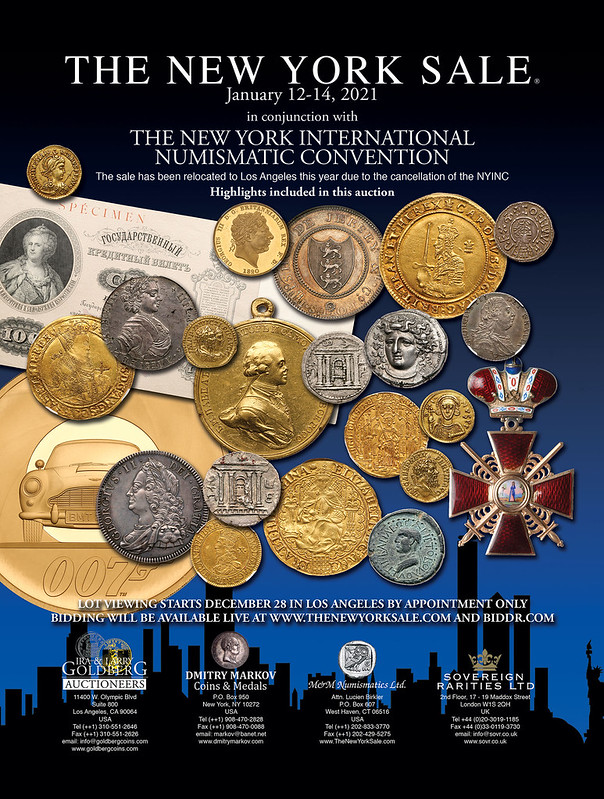
HARVEY STACK'S NUMISMATIC FAMILY, PART 86
The latest article in Harvey Stack's blog series discusses the firm's 1982 sale of the Robison Collection of U.S. and colonial coins. -Editor
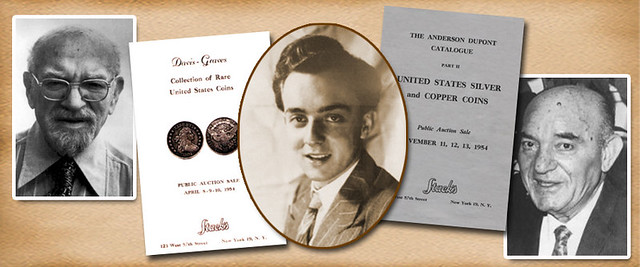
Despite the economic upheaval in 1981 and earlier years, the numismatic market seemed to withstand the uncertainties created by the sharp drop in silver on the precious metals market. While for a few years shows and conventions and the media were dominated by speculation in silver, most numismatic collectors and professional dealers who focused on the wide range of the hobby continued on as they had before this precious metals bubble. And while, of course, these people saw some losses when the silver bubble popped, they were small relative to those suffered by the speculators. Those dedicated to building collections of rare and important coins over a period of time found that their collectibles for the most part retained over 90% of their value.
We at Stack's continued our retail business, adjusted our retail and buying prices accordingly, and maintained our personal relationships with collectors. As mentioned earlier, New York City was a hub for collectors, as there were so many in the New England area, New York City, and Pennsylvania who visited with us at our shop. These dedicated collectors bought and sold as they did in previous years, and we were indeed fortunate to have so many who visited us often. While we had lost Uncle Joe and my father, Morton, the family was still very much committed to our business, with myself, my son Larry, and my cousin Norman serving our clients, along with a number of fine numismatists who came to work with us in the store, traveled with us to conventions and to visit clients. In addition, my daughter Susan came to work with us after she finished college, focusing on bookkeeping and eventually becoming the office manager.
One of the problems the hobby was still struggling with was counterfeit, doctored, refurbished and polished coins. All dealers had to contend with this problem and Stack's was no exception. As I discussed earlier, ANACS had been established by the American Numismatic Association to grade and authenticate coins. While this provided some relief, it wasn't long before unethical people in the hobby found ways to work around this new system and abuse it to make a profit. As always, our role as professional numismatists was to help our customers avoid being the victims of such scams. Unfortunately, not everyone appreciated how important it was to buy and sell with a reputable dealer in order to protect themselves against this kind of fraud. Although the PNG and other hobby groups, along with the government, worked to fix the counterfeiting problem, it would continue for years to come.
For Stack's, 1982 was a record breaking year for Public Auction sales, as we were fortunate to be able to offer a number of collections built in the decades earlier. The pedigrees from some of these sales continue to be cherished in the 21st century, as they were by the buyers in 1982. These important collections were featured in elaborate catalogs, with color illustrations of many of the rarities.
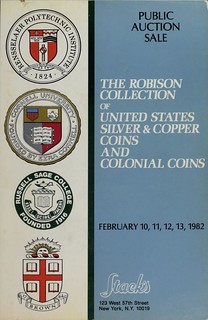 Our first sale for 1982 was the landmark offering of The Robison Collection of United States Coins and Colonial Coins. This collection was started in the 1950s and was primarily formed by Ellis Robison (known to his friends as Roby) and his wife, Doris. Professionally Roby was one of the largest pharmaceutical dealers in the northeast and lived in Troy, New York. As related in my story of 1979 when we offered the Robison collection of gold coins, Roby and Doris were very interested in higher education and the sports programs at various colleges. They donated the funds raised by the sale of their impressive collections to the various universities they supported. Roby graduated from Cornell University in 1927 and became a major benefactor to that institution as well as other schools.
Our first sale for 1982 was the landmark offering of The Robison Collection of United States Coins and Colonial Coins. This collection was started in the 1950s and was primarily formed by Ellis Robison (known to his friends as Roby) and his wife, Doris. Professionally Roby was one of the largest pharmaceutical dealers in the northeast and lived in Troy, New York. As related in my story of 1979 when we offered the Robison collection of gold coins, Roby and Doris were very interested in higher education and the sports programs at various colleges. They donated the funds raised by the sale of their impressive collections to the various universities they supported. Roby graduated from Cornell University in 1927 and became a major benefactor to that institution as well as other schools.
Stack's had served the Robisons for decades, finding the coins needed for the collections, and we were fortunate to be awarded the consignments for auction. Roby's desire was to gather as complete a collection of United States coins as he could and while that goal was not totally achieved, his was among the major "almost complete" cabinets formed in the 20th century.
The February 1982 sale of over 2,000 lots started with an extensive collection of colonial coins, followed by nearly complete runs of all issues from half cents to dollars. The rarities included are too numerous to list. The proceeds from the sale, about $4 million, went to Cornell University, Rensselaer Polytech, Russell Sage College and Brown University. It was a great way to start off the 1982 auction season, and we were pleased to know there were quite a few more fine sales to come.
To read the complete article, see:
Harvey Stack Remembers: Growing up in a Numismatic Family, Part 86
(https://www.stacksbowers.com/News/Pages/Blogs.aspx?ArticleID=harvey-stack-remembers-part-86)
To read the earlier E-Sylum article, see:
HARVEY STACK'S NUMISMATIC FAMILY, PART 85
(https://www.coinbooks.org/v23/esylum_v23n51a21.html)
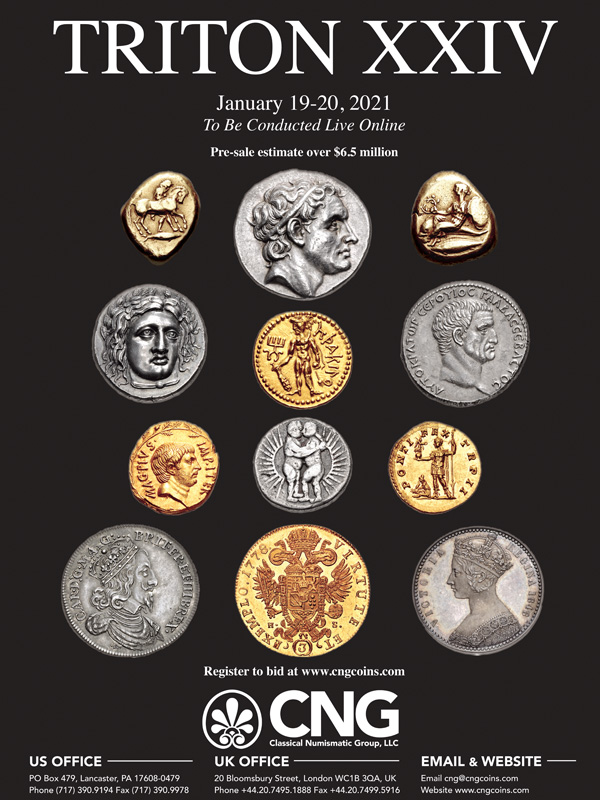
RECOLLECTIONS OF D. WAYNE JOHNSON
Pete Smith submitted these notes on the life of Dick Johnson. Thanks! -Editor
In 2003, Dick and Shirley Johnson drove to Bloomington, Minnesota, to visit their daughter, Rhonda Johnson Rajcula, her husband and Dick's grandsons. By pre-arrangement, I drove to Bloomington on the morning of May 8 to meet Dick. He got in my car and Shirley drove their car for the trip to Green Bay, Wisconsin. Dick had an appointment at the Medalcraft Mint the following day. He was making personal contacts for his research on medals, the artists and the plants that strike medals.
I had a tape recorder between us in the car to record our interview. It was not hard to get Dick to talk. I would bring up a topic and he would talk for a while before we went on to the next area of discussion. He understood what I wanted and was happy to tell his story.
He talked about his service in the Air Force. He was much more frugal with his money than some of the other airmen and had a profitable business making loans on the side. For an advance of $5 before payday, they would pay back $6 after payday.
Dick attended many coin shows and assembled a mailing list of dealers. When Dick was hired as editor of Coin World in 1960, he brought his files with him. This gave Coin World a mailing list to send out sample issues and promotional materials.
When Dick was hired, he believed he would benefit from profit sharing when Coin World became successful. The refusal of additional compensation from John Amos hastened his departure. His successor, Margo Russell, had publishing experience and family connections, but lacked Dick's extensive background and personal contacts in numismatics.
We got to Green Bay and checked into a hotel. Dick and Shirley took one room and I had an adjacent room. A door could be opened between the two rooms and our discussion continued without a recording.
That evening Dick and I had dinner with sculptor-engraver Virginia Janssen. I had met her and her mother at an earlier ANA convention. She had worked for Medalcraft Mint and did private commissions. Now she was drifting away from engraving and putting her efforts into opening a restaurant in Green Bay with her husband.
The following day Dick and I got a tour of the Medalcraft Mint. Their engraving department was on the second floor with no elevator. I recall that Dick had some difficulty getting up and down the stairs. I wrote up the tour as "A Visit to a Private Mint" for the TAMS Journal, February 2005.
My interview in the car was published in the Summer 2003 issue of The Asylum as "Recollections of D. Wayne Johnson as told to Pete Smith." I did not write the article but just transcribed his words from the interview. I believe Dick told the story much better than I could. The article is available on the Newman Numismatic portal.
I treasure the time I was able to spend with Dick. He had an encyclopedic knowledge of artists and minting techniques and was always willing to share what he knew. I hope that E-Sylum readers also appreciated his weekly contributions.
To read the complete article, see:
Recollections of D. Wayne Johnson as told to Pete Smith
(https://nnp.wustl.edu/library/book/510102)
A DICK JOHNSON E-SYLUM SAMPLER
Here are some examples of Dick Johnson's E-Sylum submissions over the years. -Editor
May 7, 2000: AMERICAN NUMISMATIC FILMMAKER KILLED IN ROAD RAGE
Michael Craven, who had built a
reputation in the numismatic field as a promising
filmmaker was killed Sunday April 30 at 1 AM on a Los
Angeles Freeway. Following a confrontation with youths
in a stolen Chevrolet Suburban he had pulled off the
Ventura Freeway at Barham Boulevard exit. When he
stepped out of his jeep the youths struck him and left
the scene. He was dead on arrival at Cedars Sinai
Hospital in West Hollywood.
Craven, 44, had produced a number of videos for the numismatic field. These included: "The Granite Lady" (on the San Francisco Mint), "Keys To The Treasury" (on the U.S. Treasury), ".900 Fine" (on the Carson City Mint) and "The Medal Maker" (written by D. Wayne Johnson and narrated by former chief mint engraver, Elizabeth Jones, on Laura Gardin Fraser).
He had interviewed and filmed more than forty numismatists and dozens of U.S. Mint and Engraving and Printing officials for a major film documentary on the history of American money. The project had occupied nearly three years of his time and had amassed over 20 hours of film. According to close friend Dick Johnson he had edited this to a six-hour documentary and had less than fifteen minutes to complete the final segment.
To read the complete article, see:
AMERICAN NUMISMATIC FILMMAKER KILLED IN ROAD RAGE
(https://www.coinbooks.org/esylum_v03n19a03.html)
June 18, 2006: TEN NUMISMATIC BOOKS I'D LOVE TO READ
Here is a list of ten numismatic books
I would purchase and love to read if they existed:
10. Confessions of an Illicit Coin Slabber.
9. How To Design a Modern Coin.
8. The Western Gold Bar Controversy - The 24 Karat Truth.
7. Coin Grading By Ouija Board: A More Accurate System.
6. Coin Con Catalog - A Comprehensive List of Criminals in Numismatics.
5. The Secret History of Walter H. Breen.
4. The Red Book of Numismatic Literature.
3. ANA Politics, Scandal and Rumor - The Truth Revealed.
2. The Official History of the United States Mint.
1. Coin Engraving Through The Ages
To read the complete article, see:
DICK JOHNSON: TEN NUMISMATIC BOOKS I'D LOVE TO READ
(https://www.coinbooks.org/esylum_v09n25a09.html)
Sept. 10, 2007: DICK JOHNSON'S SCHULMAN-FAROUK ARCHIVE
The president of my local coin club,
Mark Sartori, was helping me unpack some boxes that hadn't
seen the light of day for a number of years. Mark was handy
with a hammer and paint brush, and had just built a wall of
shelving for me. We were unpacking boxes in no particular
order to fill empty shelves.
I opened a box and found an envelope stuffed with documents. 'I'll bet you will recognize this name,' I said to Mark. He leaned over my shoulder and saw a Christmas card. I flipped it open. 'Read the name.'
'Farouk' he said. 'But note the 'R' under the name. R. Regina. King. That is a Christmas card from King Farouk to Hans Schulman.' Mark stared in disbelief.
With the Christmas card was 72 pages of invoices of all the coins Hans M. F. Schulman had purchased at the Palace auctions of King Farouk's coin collection sold by the government of Egypt in February 1954 after the forced abdication of Farouk as monarch in July 1952. And two of Hans' hand written notes conveying the material to me. He had originally included the catalogs of the sale, but had asked for their return, which I had dutifully done.
Also there are two color photographs taken while the auction was in progress at the Egyptian palace. I pointed out to Mark those I recognized. "That's Hans. That's David Spink. That was a dealer from Spain." Apparently the photos were taken by Gaston Di Bello of Buffalo, NY. There was an envelope enclosed addressed to me. I don't remember asking Di Bello to send me the photos but here they are.
Further down was a page of notes identifying most of the individuals in the photos. At some point I must have asked Hans to tell me who these people were. It included two Baldwin's, two Calicos, two Santa Mario's -- all European dealers, and four more individuals who were also named.
The auction was bittersweet for Hans. King Farouk was Hans' biggest customer. And he ended up owing Hans millions of dollars before the abdication. He tried to collect or to retrieve the coins not paid for prior to the auction. The only way he could recoup his money was to buy back as many of the coins as possible and settle with the government of Egypt. I don't remember the final outcome or the settlement details.
But I do remember Hans telling me when Farouk was alive and king of Egypt they would come to work every day in New York City, receive the coin orders from Farouk, ship the coins, and that was their day's work. It wasn't until the end when King Farouk's payments were slow in coming. It is not good for any business to have only one customer. What happens when you lose that one customer? That's what happened to Hans.
Hans was a dear friend to me. When I was in the medal auction business he guided consignments my way. He included me in a coin deal or two. At a coin show once he handed me a cased set of gold coins. 'Here, go sell that to so-and-so. Sell it for anything over X amount and make yourself a fat fee.' Hans was my first weekly columnist at Coin World. His text came in written on all kinds of paper as he traveled all over the world.
And here is a mini archive of Schulman documents. Perhaps I should have it appraised and offer it to some numismatic writer who wants to do research or an article on Schulman or Farouk as a coin collector.
To read the complete article, see:
DICK JOHNSON'S SCHULMAN-FAROUK ARCHIVE
(https://www.coinbooks.org/esylum_v10n36a06.html)
June 13, 2004: REAGAN'S MEDALLIC ART COMPANY VISIT
The year was 1969. Medallic Art
Company, then on 45th Street in midtown Manhattan, was
striking the California Bicentennial Medal. The call came
midweek: the governor from California was in town on
business, he has a free hour tomorrow at midday. "Could
he come visit your plant to see their Bicentennial Medal
being struck"?
"Could he"? W-e-l-l Y-e-s! We couldn't wait. My chore was to get publicity photographs taken. But by the end of the day, however, I hadn't lined up a photographer yet. My usual photographers were all busy. We were in the center of the photographic industry on the East Side of Manhattan, amid photo studios and film processing plants, but I couldn't find a last-minute photographer until an hour before the governor's intended arrival.
His entourage was not that large, four men as I recall. MAco President Bill Louth did the honors in the usual VIP tour, from a start in the showroom and oval gallery to his office and the firm's collection of fine art statues. We had a small statue of a bear. The Governor walked over to that statue and caressed it. The California bear was the symbol on the state's Bicentennial Medal.
Reagan passed the glass wall with all the office girls watching his every move. He smiled and waved at them. Was this the governor, the movie star, or the man? Either way he charmed the ladies.
In the plant he became fascinated with the die-engraving pantograph, standing in the crowded room watching the artist's original model being engraved into a die to strike the medals.
To read the complete article, see:
REAGAN'S MEDALLIC ART COMPANY VISIT
(https://www.coinbooks.org/esylum_v07n24a05.html)
June 22, 2014: DICK JOHNSON'S CALL TO ARMS: COINS COULD DISAPPEAR
I have sounded the call to arms before but no one in authority at the American Numismatic Association seems to be listening. An action is needed that overshadows perhaps 90% of the activities in which the ANA is currently involved. A monster is lurking in the future that would severely curtail the field of numismatics.
The ABC network issued a report this week on the declining use of circulating coins in America. We all know we are in a soft economy. This has led to fewer purchases and less need for use of coins in making payment for small value transactions. The report reveals the government office -- the Cash Product Office -- that tracks the amount of coins in circulation. It also determines where and what coins are needed to be obtained from the Federal Reserve Banks (which obtains newly minted coins from the Mint.)
The rumbling behind closed doors is that circulating coins may be abandoned altogether Such action would end entirely with the current trend of increased payments online by phone. This is, in effect, Electronic Transfer of Payments.. That is the monster in the closet.
If such an action would occur it would severely damage coin collecting, let alone the entire numismatic field. Numismatists would be forced to study existing coins like scientists and archeologists study clay tablets.
To read the complete article, see:
DICK JOHNSON'S CALL TO ARMS: COINS COULD DISAPPEAR
(https://www.coinbooks.org/esylum_v17n26a23.html)
THE BOOK BAZARRE
HERITAGE OFFERS PARTRICK BRASHER DOUBLOONS
There are many great coins coming up in the Partrick Platinum segment of the Heritage Auctions January FUN sale. Cataloguer David Stone kindly sent a reminder when two important highlights went online. Thanks! -Editor
Dave writes:
"The first is the finest-known 1787 New York-style Brasher doubloon, MS65 Star NGC, CAC, in lot 3934 of the catalog. The lot description includes the previously unpublished account of Matthew Stickney's acquisition of this spectacular rarity from a New York bullion broker in 1848.
"The second coin is the closely related, finest-known 1786 Lima doubloon, MS61 NGC, CAC in lot 3935. Only two examples of Brasher's Lima doubloon are known to collectors today and the lot description includes an enhanced image of this coin, with the mysterious missing numerals and letters in the legend illustrated.
"These are among the rarest and most valuable issues in the Colonial series and both coins have been off the market for about 40 years. We just posted the enhanced lot descriptions for these coins, with extra images and hyperlinks to the important introductory section of the catalog on Ephraim Brasher's life, accomplishments, and other private coinage. We think readers would be interested to read about these important early rarities."
Absolutely! Below are short excerpts; see the complete lot descriptions online. I really like the artwork. That treatment isn't practical for lesser-valued coins, but it's very nice to see here. -Editor
1787 New York-Style Brasher Doubloon, EB on Wing
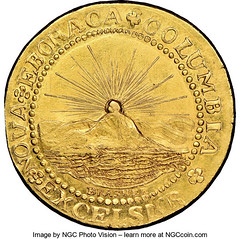
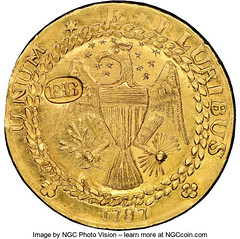
1787 New York-Style Brasher Doubloon, EB on Wing, MS65? NGC. CAC. W-5840. The New York-style Brasher doubloon is arguably the world's most famous numismatic rarity, and the Stickney-Ellsworth-Garrett-Partrick example is the finest of the mere seven known specimens. It is a coin any collector would love to own, but only one will be able to possess. Acquired by pioneer numismatist Matthew Stickney in 1848, the present coin has been offered publicly only twice in all the intervening years since its discovery. On both occasions it set a world-record price for any coin ever offered at auction.
In its first appearance, in Henry Chapman's sale of the Stickney collection in 1907, it realized $6,200, shattering the record of $2,165 set by the redoubtable 1822 half eagle in the S.H. & H. Chapman sale of the H.P. Smith Collection the year before. It also far-outdistanced the Stickney 1804 dollar, which sold for $3,600. This amazing record stood for 22 years. In its second offering, from the fabled Garrett Collection in 1979, it realized an equally spectacular total of $725,000, a record price that was not surpassed for a decade. Thus, for longer than any other coin, the Stickney Brasher doubloon held the title of "the world's most valuable coin." Heritage Auctions is indeed privileged to offer the finest-known example of the celebrated 1787 New York-style Brasher doubloon in this once-in-a-lifetime opportunity.
Obverse: The obverse was adapted from the state coat of arms of New York. The sun is rising over the peak of a mountain with a body of water in the foreground. Brasher's name is spelled out below the waves, in small letters. This central device is enclosed within a circle of beads. The legend, around: NOVA EBORACA COLUMBIA EXCELSIOR with each word separated by a rosette. This legend translates to New York, America, Ever Higher. Excelsior remains the state motto to this day.
Reverse: An eagle with wings displayed, and a shield covering its breast, has a bundle of arrows in its sinister claw (to the observer's right) and an olive branch in its dexter claw. Thirteen stars surround the eagle's head. This central device is enclosed in a continuous wreath. Around, the legend: UNUM E PLURIBUS with the words separated by stars. This legend translates to One of Many. Below, the date 1787 is flanked by rosettes. These devices are similarly used on the Great Seal of the United States. As on most coins of this era, the denomination was not specifically expressed.
On one example of the New York style doubloon, Brasher impressed his counterstamp on the shield on the eagle's breast. On the other six known coins, the counterstamp was placed at slightly varying locations on the eagle's left (facing) wing.
The New York-style Brasher doubloon in this sale combines beauty, history, eminence, and rarity. This is the finest example of the world's most famous coin. Once ensconced in the prestigious cabinets of Stickney, Ellsworth, Garrett, and Partrick, it is now being made available at auction for only the third time since Ephraim Brasher minted it in 1787. Many will vie for this incomparable prize, but it will elevate the cabinet of only one fortunate collector.
Kudos to Dave Stone for discovering a relevant 1848-Dated letter to Matthew Stickney in Stickney's papers at the Peabody Essex Museum. See the complete lot description for much, much more. -Editor
To read the complete lot description, see:
1787 DBLN New York-Style Brasher Doubloon, EB on Wing, MS65? NGC. CAC. W-5840....
(https://coins.ha.com/itm/colonials/1787-dbln-new-york-style-brasher-doubloon-eb-on-wing-ms65-ngc-cac-w-5840-pcgs-487-/a/1326-3934.s)
1786 Brasher Lima Doubloon
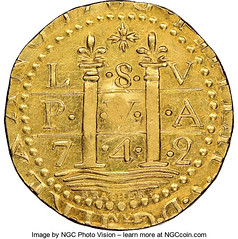
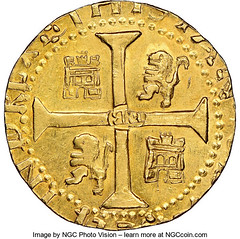
1786 Brasher Lima Doubloon MS61 NGC. CAC. W-5820. Ephraim Brasher's 1786 Lima style doubloon is one of the most elusive and enigmatic issues of early American coinage. First discovered in the 1890s, only two examples of this mysterious issue are known to numismatists today. The Partrick coin is by far the finer of these and the only one with enough detail to decipher the all-important peripheral date and legends. Struck by famous New York silversmith Ephraim Brasher in 1786, the Lima style doubloons have always been overshadowed by their more famous New York style counterparts. However, the Lima doubloons are even rarer and may be of equal or greater historical importance. Heritage Auctions is pleased to offer the finest-known example of this iconic rarity in just its second auction appearance.
Composition of the Lima Style Doubloons Confirms Authenticity
Although the Lima doubloons were intended to closely resemble their Spanish counterparts of the 1740s, specifically the Philip V eight escudos of 1742, Brasher included their true date of manufacture (1786) in the peripheral obverse legend. Unfortunately, the legend overlaps the edge of the coin on one example of the Lima doubloon and is almost completely off the flan on the other. Only the bottom portion of the date was actually impressed into the surface of the present coin, leaving later numismatists to guess at the identity of the four digits partially displayed. The first two numerals were easily recognized as 1 and 7, but the bottom of the third figure was variously interpreted as 0 or 8; the final symbol was thought to represent either a 0 or a 3. The 1914 ANS committee of Wayte Raymond, Edgar Adams, and William Woodin conjectured either 1700 or 1780 for the date, and B. Max Mehl in his 1922 James Ten Eyck catalog thought 1703. It was only in 1991, when Michael Hodder carefully measured and analyzed the features of the coin offered here, that the correct date of 1786 was established.
In his detailed 1991 study entitled "Ephraim Brasher's 1786 Lima Style Doubloon," which was published in the 1992 ANS anthology Money of Pre-Federal America for the Coinage of the Americas Conference, Hodder reported the findings of several scientific tests conducted on the Lima style doubloons and their New York and Spanish counterparts. Elemental analysis determined that the compositions of the New York and Lima doubloons were virtually identical, but differed measurably from the earlier Spanish coins. Brasher's coins contained about the same percentage of gold as their Hispanic prototypes, but varied in the amounts of silver and copper in their alloy.
Hodder's painstaking efforts revealed the date on the obverse:
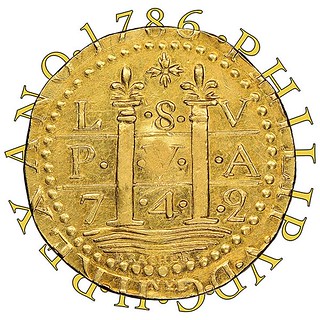 "The obverse date of 1786 on the Lima style doubloon has not been noticed before. The authors of the 1914 ANS committee report believed that the date was either 1700 or 1780, while Mehl ventured a reading of 1703. The identity of the first two numerals is agreed upon by all previous writers, given the vectors of the strokes of those numbers. The third numeral shows a closed loop composed of two parts, each equally wide, whose vectors describe a circle of evenly decreasing circumference. The fourth numeral's closed loop is wider on the right than the left, but is wider in diameter than the third's. The only possible candidate for the third is a numeral half of whose shape includes a closed loop with design elements of the required vector and thickness, eliminating all but 8 as possible choices. It may be remembered that this reading was one of the two suggested by the ANS in 1914. The fourth numeral, similarly, can only have been 6, given the varying thickness and apparent vector of the visible stroke. The thickness of the strokes with which it was drawn are too narrow on the left to accommodate the shape of a "0," and a reading of "2," "3" or "5" is ruled out by the loop's obvious closure on the left. All numerals composed of straight line elements, such as "1," "4," "7" and '9," are clearly impossible as candidates. Of the remaining two numerical choices, "8" is eliminated by the width of the visible loop and comparison with the vectors of the strokes in the third number of the date, leaving "6" as the only logical choice."
"The obverse date of 1786 on the Lima style doubloon has not been noticed before. The authors of the 1914 ANS committee report believed that the date was either 1700 or 1780, while Mehl ventured a reading of 1703. The identity of the first two numerals is agreed upon by all previous writers, given the vectors of the strokes of those numbers. The third numeral shows a closed loop composed of two parts, each equally wide, whose vectors describe a circle of evenly decreasing circumference. The fourth numeral's closed loop is wider on the right than the left, but is wider in diameter than the third's. The only possible candidate for the third is a numeral half of whose shape includes a closed loop with design elements of the required vector and thickness, eliminating all but 8 as possible choices. It may be remembered that this reading was one of the two suggested by the ANS in 1914. The fourth numeral, similarly, can only have been 6, given the varying thickness and apparent vector of the visible stroke. The thickness of the strokes with which it was drawn are too narrow on the left to accommodate the shape of a "0," and a reading of "2," "3" or "5" is ruled out by the loop's obvious closure on the left. All numerals composed of straight line elements, such as "1," "4," "7" and '9," are clearly impossible as candidates. Of the remaining two numerical choices, "8" is eliminated by the width of the visible loop and comparison with the vectors of the strokes in the third number of the date, leaving "6" as the only logical choice."
Again, see the lot description for much more on this important coin. -Editor
To read the complete lot description, see:
1786 DBLN Brasher Lima Doubloon MS61 NGC. CAC. W-5820...
(https://coins.ha.com/itm/colonials/1786-dbln-brasher-lima-doubloon-ms61-ngc-cac-w-5820-pcgs-491-/a/1326-3935.s)
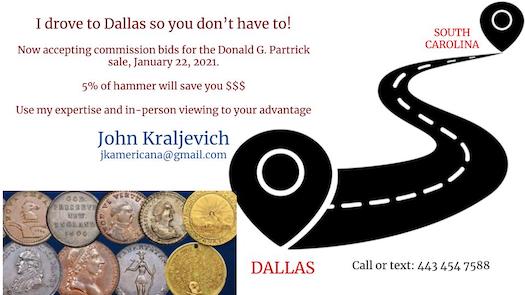
STACKS-BOWERS OFFERS RARE HAITIAN NOTES
Currency Auction Associate Christopher Dahncke of Stack's Bowers published a blog article about a large assortment of Haitian Notes on the firm's January 2021 sale. -Editor
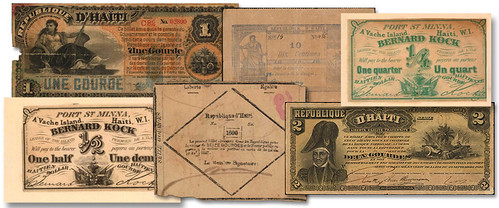
Stacks Bowers Galleries is pleased to present a large assortment of Haitian notes in our January 2021 auction. We are offering 53 notes from Haiti, split between our Live and Internet sessions. These notes span from the 1820s through the 1960s, offering notes from the early Republic of Haiti, through the U.S. Civil War period and up to more modern times.
The standout highlights are lots 30176 and 30177. These notes stem from Bernard Kock's attempts to re-settle freed slaves from the American Civil War on the Haitian satellite island of Île-à-Vache. Bernard planned to use the island as a settlement to produce cotton, with freed Blacks as workers, and secured permission from the Haitian government to do so. The islands own currency was produced by Kock, which could be exchanged for normal Haitian Gourde notes. The settlement of the island fell through in late 1863, mainly to the fault of the financiers, and President Abraham Lincoln sent a ship to Haiti to bring the workers back to the United States.
The notes would have been issued from around the time of the islands settlement of April 13, 1863 through December 22, 1863, when the settlement was abandoned, an eight-month window which explains their scarcity today. Two outstanding Haitian rarities – a 1/2 Gourde and 1/4 Gourde – are presented in the Stack's Bowers Galleries January auction for the first time since 2014.
Settlements for freed slaves such as those in Haiti and Liberia are fascinating glimpses of history, backed by both do-gooders and those seeking new ways to exploit workers for profit. I wish I'd known about these notes when I was collecting U.S. Civil War scrip - they would have been highlights of my collection. Their size, style and format is identical to so many of the small change notes used throughout the U.S. in that troubled period. So much to collect and study - so little time. -Editor
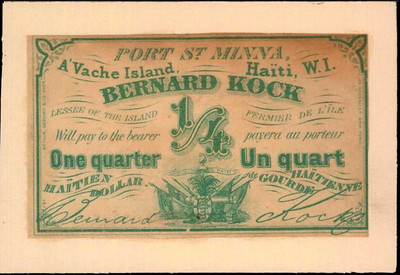
To read the complete lot descriptions, see:
Haiti. Bernard Kock. Île à Vache. P-Unlisted. ND(1863), 1/4 Gourde. Uncirculated and mounted on cardstock, Toning. Private Issue.
(https://auctions.stacksbowers.com/lots/view/3-PLZ9O/haiti-bernard-kockle-vache-p-unlisted-nd1863-14-gourde-uncirculated-and-mounted-on-cardstock-toning-private-issue)
Haiti. Bernard Kock. Île à Vache. P-Unlisted. ND(1863), 1/2 Gourde. Uncirculated and Mounted on Cardstock. Private Issue.
(https://auctions.stacksbowers.com/lots/view/3-PLZ9H/haiti-bernard-kock-le-vache-p-unlisted-nd1863-12-gourde-uncirculated-and-mounted-on-cardstock-private-issue)
For more information, see:
Haiti Paper Money, Bernard Kock Issues, Ca. 1863
(http://www.numismondo.net/pm/hti/bernardkock/)
Bernard Kock Colonized Cow Island With Freed Slaves
(https://thompsongenealogy.com/2011/12/bernard-kock-colonized-cow-island-with-freed-slaves/)
To read the complete article, see:
Large Assortment of Haitian Notes to Highlight January 2021 Auction
(https://www.stacksbowers.com/News/Pages/Blogs.aspx?ArticleID=haitian-banknotes-nyinc-stacks-bowers-galleries)

DNW NORTH YORKSHIRE MOORS PART IV SALE
Dix Noonan Webb of London are selling the fourth and final part of Marvin Lessen's North Yorkshire Moors collection of British coins. Here's the press release. -Editor
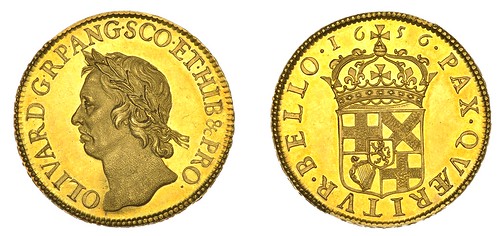
Lot 1142
The fourth and Final Part of the North Yorkshire Moors Collection of Coins and Medals will be offered in a live/online auction by International coins, medals, banknotes and jewellery specialists Dix Noonan Webb on Thursday, January 21, 2021.
Amassed by American-born Marvin Lessen, who later moved to Scarborough in North Yorkshire. The highlight of the Collection of 200 lots is an extremely fine and rare Oliver Cromwell 50 shilling gold coin, dating from 1656 by Thomas Simon, who was Cromwell's chief engraver. Depicting a portrait of Cromwell, this coin is estimated to fetch £100,000-150,000 and only 12 specimens are believed to exist, with most being in institutions [lot 1142].
As Peter Preston-Morley, Head of Department and Associate Director, Dix Noonan Webb, explains: "Marvin Lessen's favourite period of numismatic study centred on the mid-17th century – the coins, medals and seals of Oliver Cromwell and the early years of Charles II. The three parts of the collection that have been sold at Dix Noonan Webb so far, have fetched just under £1million (including buyers premium), but we feel that we have kept the best to last and this sale truly reflects Mr Lessen's fascination with the Cromwell era, and particularly the coins of Thomas Simon. "
He continues on to say: "Marvin Lessen was born in Baltimore, Maryland in 1934. His family moved to Hazleton, Pennsylvania thence to Albany, New York, where relatives still live. Graduating from the Moore School of Electrical Engineering at the University of Pennsylvania, he spent his career in the aerospace/defense industry, working in various technical locations in Europe and North America. A collector from an early age, of coins, stamps, arms and armour, his move to Scarborough in 1962 precipitated the interest to collect British coins on a serious basis. By the time he had joined the British Numismatic Society in October 1964, and subsequently the Royal Numismatic Society and the American Numismatic Society, he was well-known to the principal London dealers and auctioneers of the day."
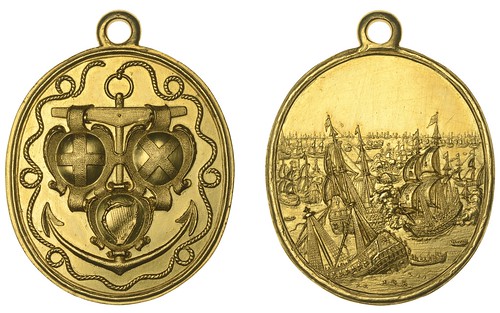
Lot 1181
An extremely rare and fine gold Naval Reward medal from 1653-4, again struck by T. Simon, decorated with the shields of England, Scotland and Ireland superimposed on anchor and surrounded by rope is estimated at £30,000-40,000. It is believed to have been awarded to Clerk of the Cheque John Clifton, on the Commonwealth warship George. ‘The Plaine Borderless Medal', first authorised in August 1653, was awarded after the successful conclusion of the last of the three great naval battles of the First Anglo-Dutch War [lot 1181].
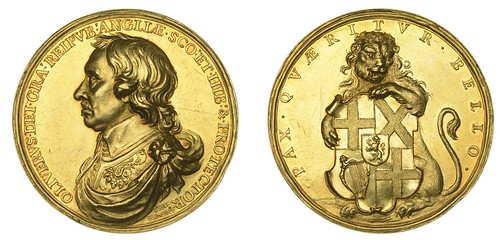
Lot 1175
A gold medal of Lord Protector, circa 1655-8 by T. Simon, depicting an armoured and draped bust carries an estimate of £10,000-15,000. Only three or four of these medals are known and one is in the British Museum. In Simon's archive there are invoices for five medals and their recipients, namely two English officers and three ambassadors. In the 17th century it was normal for a ruler to give out precious awards to diplomats in the form of such items as miniature pictures in jewelled mounts, or gold medals and chains, and Cromwell employed both methods [lot 1175].
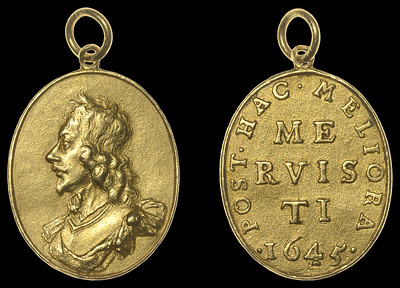
Lot 1163
Another interesting piece is a rare medal by Simon of Sir Thomas Fairfax, dating from 1645. Sir Thomas Fairfax, 3rd Baron (1612-71) was Lord General of Parliament's armies from 1645 to 1650. These medals, believed to be a private commission, were the personal gift of Fairfax to those who fought with him at the battle of Marston Moor (2 July 1644). It is estimated at £3,000-4,000 [lot 1163].
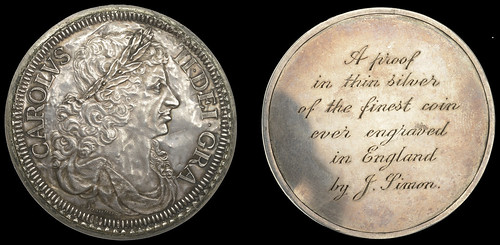
Lot 1219
Of considerable numismatic importance and believed to be the earliest striking from this famous die is an extremely fine undated trial Charles II piece by T. Simon, which is estimated at £4,000-5,000. Simon fell out of favour due to his political leanings – he was a puritan and it is thought that he might have died due to the plague in 1665 [lot 1219].
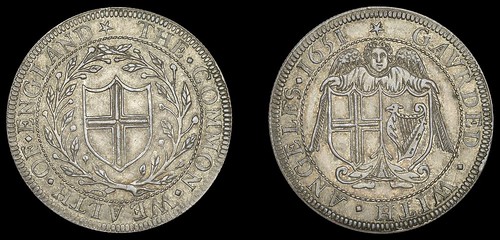
Lot 1135
Among the Commonwealth Coins of 1651 is an extremely rare and fine silver Shilling by Irishman David Ramage. Once in the collection of the Duke of Devonshire, the shilling is decorated with a small shield of England and is estimated at £15,000-20,000. David Ramage was Simon's competitor and fell out of favour with Cromwell but had the monopoly on the production of 17th trade tokens [lot 1135].
For more information, see:
https://www.dnw.co.uk/
To read the earlier E-Sylum article, see:
DNW NORTH YORKSHIRE MOORS PART II SALE
(https://www.coinbooks.org/v22/esylum_v22n24a23.html)
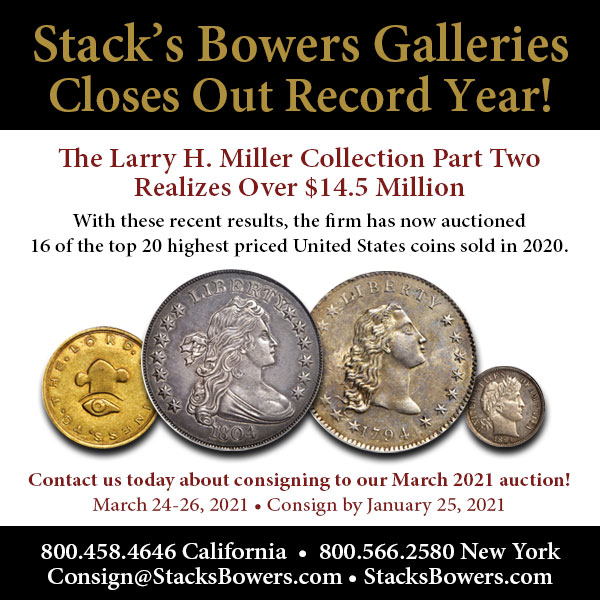
NUMISMATIC NUGGETS: JANUARY 3, 2021
Here's a selection of interesting or unusual items I came across in the marketplace this week. Tell us what you think of some of these. -Editor
Wilkins Counterstamp on 1823 Irish Halfpence
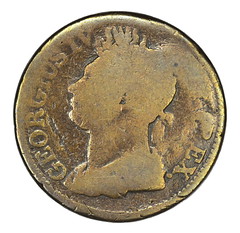
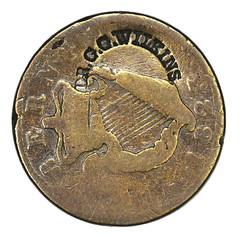
1823 Irish Halfpence (KM 150)
Countermarked "DR. G. G. WILKINS." (stamped in an arc)
Dr. G. G. Wilkins was an infamous dentist in Pittsfield, New Hampshire, who also sold firearms and animal pelts among other items, and thus his building acquired the name "Fort Wilkins". (I have seen an image of his building.)
Date of issue: Circa 1860's.
Place of issue: Pittsfield, New Hampshire.
Brunk W-610.
Rulau M NH 107.
A moderately common counterstamp on a very uncommon undertype. From Bob Merchant's latest eBay offering. -Editor
To read the complete lot description, see:
1823 Irish Halfpence, Counterstamp "DR. G. G. WILKINS." ( Pittsfield, N.H. )
(https://www.ebay.com/itm/1823-Irish-Halfpence-Counterstamp-DR-G-G-WILKINS-Pittsfield-N-H/133619567654)
1840s Temperance Movement Pledge Token
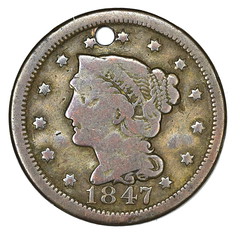
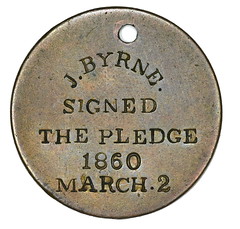
1847 U.S. Large Cent, holed
Countermarked "J. BYRNE. / SIGNED / THE PLEDGE / 1860 / MARCH. 2"
Stamped in individual letters on planed reverse of host coin.
This is a token of the mid-19th century U.S. Temperance Movement.
The auction lot description is as follows:
[ A fascinating use of a large cent, and a scarce numismatic memorial to an important cultural movement of the period. The pledge was that of the Sons of Temperance: "I will neither make, buy, sell, nor use as a beverage any spirituous or malt liquors, wine, or cider." Beginning around 1840, the so-called "Washington Movement" was the first of many waves of temperance movements that had political agendas. The National Division of the Sons of Temperance was founded in 1844; at the time J. Byrne took the pledge and wore this badge as a reminder of his teetotalism, Abraham Lincoln was a staunch supporter and took an active speaking role for the organization. ]
(See the Spencer Radnich article in the October 2004 issue of the TAMS Journal for more information.)
Ex. Bowers and Merena Galleries, 13-15 March 2003 auction, lot 3280.
Another great piece from Bob Merchant's latest eBay offering. -Editor
To read the complete lot description, see:
1847 Large Cent, Counterstamp "J. BYRNE. / SIGNED THE PLEDGE / 1860 / MARCH. 2"
(https://www.ebay.com/itm/1847-Large-Cent-Counterstamp-J-BYRNE-SIGNED-THE-PLEDGE-1860-MARCH-2/133619574157)
1843 New Brunswick One Penny Token
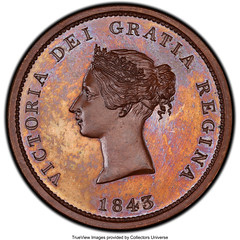
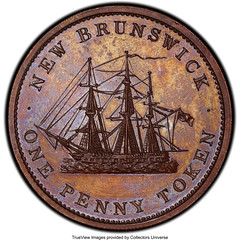
New Brunswick. Victoria bronzed copper Proof "Bust/Ship" Penny Token 1843 PR64 Brown PCGS, KM2, Br-909, NB-2A, Robins-29203. Plain edge. Medal alignment. A glossy medallic striking that offers bold detail paired with wonderful chocolate-brown surfaces that spill over into hues of auburn and deep purple when tilted beneath light.
Ex. Temple Collection
Very nice New Brunswick token offered by Heritage. -Editor
To read the complete lot description, see:
Canada: New Brunswick. Victoria bronzed copper Proof "Bust/Ship" Penny Token 1843 PR64 Brown PCGS,...
(https://coins.ha.com/itm/canada/new-brunswick-victoria-bronzed-copper-proof-bust-ship-penny-token-1843-pr64-brown-pcgs-/a/3089-32403.s)
1900 Paris Exposition Medal
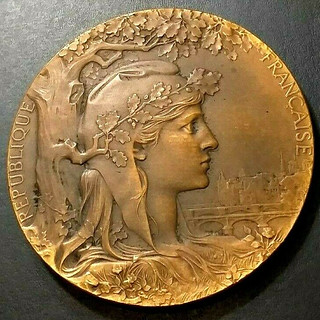
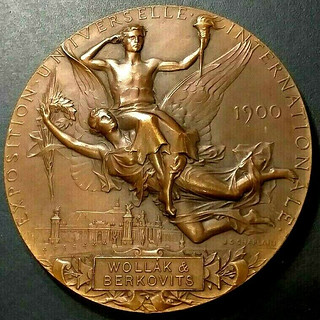
OBVERSE
Obverse legend: REPUBLIC - FRENCH.
Obverse description: Bust of Marianne draped on the right, wearing the Phrygian cap decorated with an oak branch; an oak tree in the background and a town with a pond in the background.
REVERSE
Reverse legend: EXHIBITION. ONE - IVERSELLE. - INTERNATIONAL. / 1900 // COLAS.
Reverse description: An athlete carrying the flame, carried in the air by a victory wielding a laurel wreath; Petit and Grand Palais in the background. Signed: J. C. CHAPLAIN
Beautiful Art Nouveau medal. -Editor
To read the complete lot description, see:
1900 Olympic Paris Rare French Art Nouveau medal to Jewish Company by Chaplain
(https://www.ebay.com/itm/1900-Olympic-Paris-Rare-French-Art-Nouveau-medal-to-Jewish-Company-by-Chaplain/402585129538)
Chopmarked 1905-S Philppines Peso
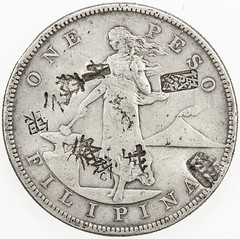
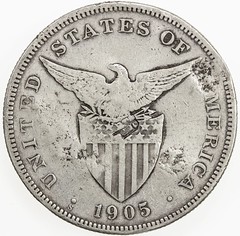
CHOPMARKED COINS: PHILIPPINES: U.S. Territory, AR peso, 1905-S, KM-168, several large Chinese merchant chopmarks, plus one assay chop, VF, ex D. R. Bain Collection.
Not the prettiest coin, but great obverse chopmarks. Nice example of a coin that heavily circulated in the region. From the upcoming Stephen Album sale. -Editor
To read the complete lot description, see:
CHOPMARKED COINS: PHILIPPINES: U.S. Territory, AR peso, 1905-S. VF
(https://www.icollector.com/CHOPMARKED-COINS-PHILIPPINES-U-S-Territory-AR-peso-1905-S-VF_i39431979)
Large Cent Pie Crimper Wheel
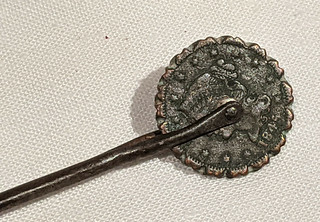
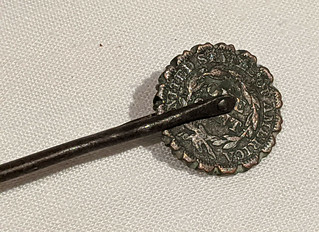

"Coin has been pierced and had a handle added so that it could be used as a pie crimper tool. The crimper/jagger part is made from an 1845 Large Cent on which the details including the word "Liberty" are clear & the date is easily readable. The handle has pleasing natural rich patina from age & use. The coin crimper/jagger part has a dark rich layer of patina combined with some corrosion from age & use. This is entirely original & has never been cleaned or tampered with in any way."
I've seen Large Cents turned into washers and gears, but a pie crimper is a first for me. -Editor
To read the complete lot description, see:
1845 LARGE CENT PIE CRIMPER JAGGER WHEEL, LIBERTY READABLE ON COIN, RARE
(https://www.ebay.com/itm/1845-LARGE-CENT-PIE-CRIMPER-JAGGER-WHEEL-LIBERTY-READABLE-ON-COIN-RARE/143647368637)
Stereoview Coin Photo
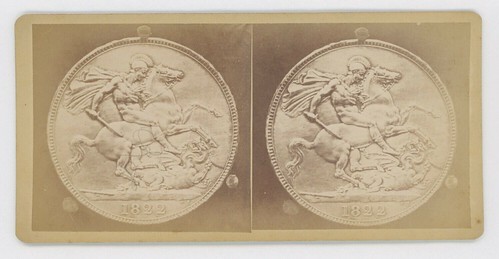
1870's stereoview photograph which shows the reverse of an 1822 English coin with King George slaying the dragon design. This rare stereoview shows the most classic & memorable of all English coin designs. This card has rounded corners matt as issued. The card measures 6 15/16 inches by 3 3/8 inches. There is no photographer's identification but the card is most likely English. The card is in excellent condition with only light age toning. Quite an unusual & certainly a very rare stereoview as we have never seen another example in our 50+ years of involvement in early photography.
The pie crimper seller has a second one on offer as well. But here's another item that caught my eye. I've seen stereo cards of scenes at the U.S. Mint and Bureau of Engraving and Printing, but was unaware of cards picturing specific coins. Does anyone have one of these in their collection? -Editor
To read the complete lot description, see:
1870's STEREOVIEW OF AN 1822 COIN WITH KING GEORGE SLAYING THE DRAGON
(https://www.ebay.com/itm/1870s-STEREOVIEW-OF-AN-1822-COIN-WITH-KING-GEORGE-SLAYING-THE-DRAGON/143687238436)
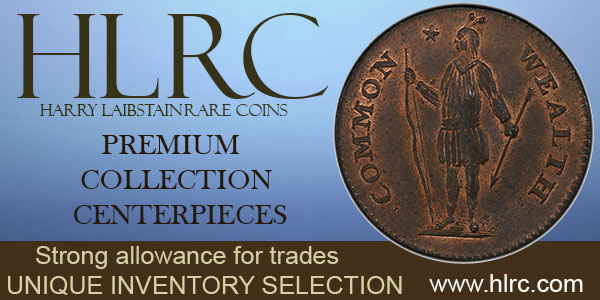
SELECTIONS FROM DAVE WNUCK MAKING THE GRADE #44
In his latest Making the Grade blog post, dealer Dave Wnuck discusses an uncirculated 1793 Chain Cent he recently purchased at $1.5 million. It's already found a buyer, so you can put your wallets down. But some of the chump change in your other pocket might get you another really cool item from his inventory. Here are a few goodies that caught my eye. -Editor
Large Cent Inlaid with an Indian Head Cent
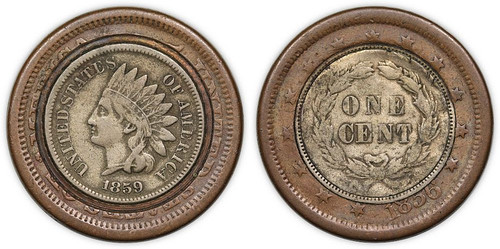
1856 Large Cent Inlaid with an 1859 Indian Head Cent. Fine [uncertified].
The first of these I have ever seen, made for a purpose unknown to me. It was purchased from a Connecticut estate. $250
Bizarre. Yet decidedly cool. I've never seen such a thing. -Editor
Belgium Vanity Skull medal
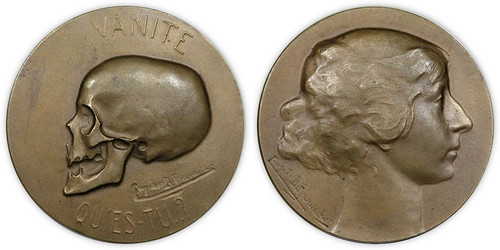
(1911) Belgium Skull medal. Uncirculated [uncertified].
Nothing to see here. Just a big ol' medal with a big ol' skull on it. Medals and coins depicting skulls have become a popular collector item in recent years. Here is a large (38 mm) bronze medal made in Belgium in the early 20th century with a matte finish and with a reported mintage of just 50. $195.
The insciption "VANITÉ QU'ES-TU..?" translates from the French to "VANITY WHAT ARE YOU ..?" A nice medal, reminiscent of the theme of the Marika Somogyi Society of Medalists piece mentioned in Dick Johnson's recent Vocabulary item, where a woman and the Devil are looking through the same mirror. See the "Notes From E-Sylum Readers" item in this issue for images of the medal. -Editor
To read the earlier E-Sylum article, see:
VOCABULARY TERM: OPENWORK
(https://www.coinbooks.org/v23/esylum_v23n50a15.html)
1969 Prince of Wales Medal
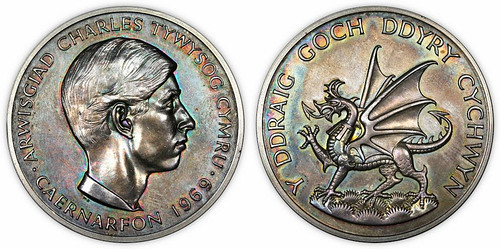
1969 Large Silver Medal Depicting a Dragon. Uncirculated [uncertified].
A large (45 mm) and heavy (2.5 oz.) silver medal depicting the Prince of Wales on one side and a dragon on the other. Gorgeously toned. $195.
Dragon or Griffin? "It can be hard to distinguish griffins from dragons, as both have four legs and wings. The griffin has a lion's body and eagle's head, and the dragon has a reptile's head and body, but the details need to be clearly shown to be certain which one you are looking at. Long legs and long ears probably indicate a griffin." How to Identify Fabulous and Mythical Beasts from the Portable Antiquities Scheme.
Or could it be The Great Roe? Described by the scholar Dr. Woodrow Allen as "A mythological beast with the head of a lion and the body of a lion, though not the same lion. The Roe is reputed to sleep for 1000 years and then suddenly rise in flames, particularly if it was smoking when it dozed off. Odysseus was said to have awakened a Roe after 600 years but found it listless and grouchy and it begged to remain in bed just 200 more years." -Editor
To read the complete articles, see:
How to Identify Fabulous and Mythical Beasts
(https://finds.org.uk/counties/findsrecordingguides/identifying
-fabulous-and-mythical-beasts/#:~:text=
It%20can%20be%20hard%20to,ears%20probably%20indicate%20a%20griffin.)
Fabulous Tales and Mythical Beasts
(https://newrepublic.com/article/113901/fabulous-tales-and-mythical-beasts-woody-allen)
To read Dave's complete blog post, see:
Making the Grade #44: Buddy, Can You Spare $1.5 Million? Plus: Finally - a Nobel Prize for the Rest of Us
(https://www.davewcoins.com/newsletter/making-the-grade-44-buddy-can-you-spare-15-million-plus-finally-a-nobel-prize-for-the-rest-of-us)

BEWARE ONLINE FAKE COIN SALES
A World Mint News Blog article describes Michael Bugeja's unfortunate experience buying a couple of ancient coins that turned out to be fake. -Editor
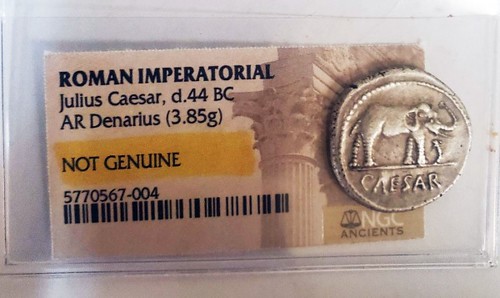
Michael Bugeja, an ancient coin enthusiast, warns about the proliferation of fakes and explains how to avoid buying them. But when you do, you should hold the seller and yourself accountable.
I have had good success in finding, identifying, and slabbing ancient coins. Although I, too, like to hold history, and have raw samples as well, I consign my finds on platforms that only accept holdered coins, using proceeds to continue my hobby. Nevertheless, I sometimes fail to do the necessary analysis before placing a bid. This year I did that twice, winning the above Caesar denarius and a Greek Aegina turtle silver stater. Upon seeing them, I knew they were fake.
Many online sellers state that their coins are guaranteed to be authentic with refunds for any reason — within 30 days. That, alas, is often not enough time for NGC or ANACS to authenticate and the buyer to return a coin. Also, be wary of any eBay seller who says the ancient coin is "unresearched" or "unknown variety." Sometimes this is an honest disclosure. But it also may be code words for fake.
I had identified and won a similar coin a few years back, sending it to NGC, which graded it as Almost Uncirculated.
I realized I was in trouble even before I received the coin because the seller was immediately offering another one. This is a relatively rare coin, and a second example from the same seller raised alarm bells. I wrote to him about my concerns and asked if he accepted returns if NGC designated the coin as "not genuine."
He replied angrily that a trader often has more than one Caesar denarii and told me if I don't like his coins not to bid again on his site.
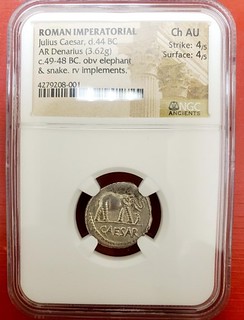 I noticed significant differences on the reverse when compared to my own genuine coin as well as the one on the NGC website. My coin was 2.51 grams, more than a gram underweight. I should have done an in-depth analysis before bidding on this lot. Consider device irregularities alongside the authentic reverse:
I noticed significant differences on the reverse when compared to my own genuine coin as well as the one on the NGC website. My coin was 2.51 grams, more than a gram underweight. I should have done an in-depth analysis before bidding on this lot. Consider device irregularities alongside the authentic reverse:
The devices are not sharp as if poorly cast. There are more than seven flaws on the reverse with respect to design or spacing, but these are among the most obvious.
The lessons here involve our love of the hobby and how others can take advantage of that love. We need to hold ourselves and sellers accountable with all coins, especially ancients. That means we must continue to learn about ancient coins and build a respectable library.
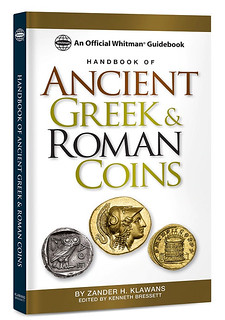 My favorites are Handbook of Ancient Greek and Roman Coins, Coins of the Bible, and 100 Greatest Ancient Coins. I also frequent online sites such as Forum Ancient Coins, which has a fake coin database.
My favorites are Handbook of Ancient Greek and Roman Coins, Coins of the Bible, and 100 Greatest Ancient Coins. I also frequent online sites such as Forum Ancient Coins, which has a fake coin database.
Finally, everyone makes mistakes in coin collecting. It's part of the learning experience. If you have purchased a coin that turns out to be counterfeit, never try to sell it to recoup your loss. Hold yourself accountable and take the fake out of circulation. Then find a reputable dealer or an online seller that guarantees authenticity without a 30-day limit on time.
You can also take advantage of an NGC service associated with eBay sellers. You can fill out a form with the eBay identification number and coin description. An ancients expert will view the listing and give you a preliminary opinion about the coin's authenticity for $5 and an estimate of grade with authenticity for $10.
To read the complete article, see:
Holding history, sellers, and yourself accountable
(https://world.mintnewsblog.com/2020/12/holding-history-sellers-and-yourself-accountable/)

REGULATIONS FOR THE ANTIQUITIES MARKET
The New York Times reported on new U.S. banking regulations affecting the antiquities market, which could have ramifications in the ancient coin trade. -Editor
The antiquities trade, which regulators have long feared provided fertile ground for money laundering and other illicit activities, will be subject to greater oversight under legislation passed by Congress on Friday when it overrode President Trump's veto.
The provisions tightening scrutiny of the antiquities market were contained within the sprawling National Defense Authorization Act, which Mr. Trump vetoed last week and which the House and Senate voted to override on Monday and on Friday.
Regulators have long worried that the opacity of the antiquities trade, where buyers and sellers are seldom identified, even to the parties in a transaction, made it an easy way to shroud illicit transfers of money. The new legislation empowers federal regulators to design measures that would remove secrecy from transactions.
Dealers resisted the move. But with the new legislation, Congress moved to broaden the 1970 Bank Secrecy Act, which increased federal scrutiny of financial transactions, to include the trade of ancient artifacts.
Exactly how the new law works will be determined over the next year by the Financial Crimes Enforcement Network, a bureau within the Treasury Department, in consultation with the private sector, law enforcement and the public. Legal experts expect that the new antiquities regulations will be similar to others governing the precious metal and jewelry industries, where certain transactions are flagged to the authorities, who then determine whether they are suspicious. The law also seeks to end the use of shell companies to conceal the identities of buyers and sellers.
To read the complete article, see:
Congress Poised to Apply Banking Regulations to Antiquities Market
(https://www.nytimes.com/2021/01/01/arts/design/antiquities-market-regulation.html)

ANOTHER MEDIEVAL CHINESE COIN FOUND IN ENGLAND
David Pickup and Dick Hanscom passed along this blog article about medieval trade links between England and China. Thanks. -Editor
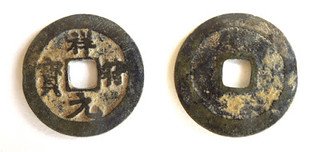 A previous post discussed a find of a Northern Song dynasty Chinese coin from England whose context suggested that it may have been a genuine ancient loss from the medieval period, along with a variety of textual and archaeological evidence for contact between England and East Asia in the Middle Ages. The following post returns briefly to this question, noting the recent discovery of a second Northern Song dynasty coin from England.
A previous post discussed a find of a Northern Song dynasty Chinese coin from England whose context suggested that it may have been a genuine ancient loss from the medieval period, along with a variety of textual and archaeological evidence for contact between England and East Asia in the Middle Ages. The following post returns briefly to this question, noting the recent discovery of a second Northern Song dynasty coin from England.
The coin in question was issued between 1008 and 1016 during the reign of Emperor Zhenzong of the Northern Song dynasty and was found at Buriton, Hampshire, around 9 miles from the coast. As was the case with the other eleventh-century Chinese coin discussed here previously, the coin doesn't seem to be part of a 'suspicious' grouping of finds or deposited curated collection, and the field that it was recovered from has also produced a handful of medieval- and immediately post-medieval finds. These include a coin of King John minted at London in 1205–7, a medieval cut farthing of perhaps 1180–1247, two fragments of one or more medieval or early post-medieval vessels, and two mid-sixteenth-century coins. As such, it seems credible that this coin too could have been a medieval-era loss, and in this context it is worth noting that such Northern Song coins might quite credibly have arrived at any point up to perhaps the late fourteenth century, given that they continued to circulate in significant numbers well into that era.
Looking more generally, the fact that we now have two, rather than one, eleventh-century Northern Song dynasty coins from England, both recovered from what seem to be medieval to early modern sites, adds weight to the case for considering them genuinely ancient losses. Interestingly, this find was also made only around 20 miles away from the only confirmed medieval imported Chinese pottery from England, a sherd of blue-and-white porcelain from a small cup or bowl that was found in a late fourteenth-century context at Lower Brook Street, Winchester. As to the wider context for these coins, the evidence for the presence of people who had, or who may have, travelled from East Asia in England during the thirteenth and fourteenth centuries was surveyed in the previous post, as was the evidence for people from Britain and Ireland in East Asia then. However, it is worth additionally drawing attention here to the 'global' distribution of medieval Chinese pottery and coins west of India, as mapped below, which demonstrates that finds of Chinese pottery and, to a lesser extent, coins outside of East Asia are by no means unknown.
To read the complete article, see:
Another eleventh-century medieval Chinese coin found in England
(https://www.caitlingreen.org/2020/12/another-medieval-chinese-coin-from-england.html)
David Sundman passed along this article from The Times. -Editor
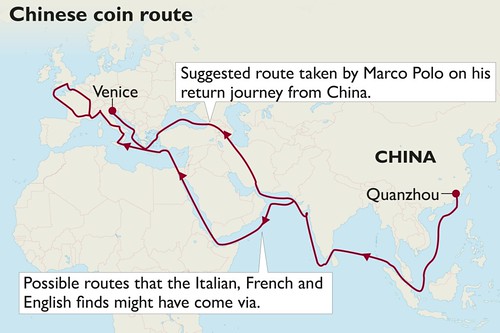
A Chinese coin found in a Hampshire field suggests that medieval trade between England and the Far East was more extensive than previously thought, a historian has said.
The copper alloy "cash" coin of the Northern Song dynasty dates from 1008-1016, but is of a type that remained in wide circulation in China for several hundred years.
The coin was found by a detectorist near Petersfield and about 20 miles from the only other Chinese artefact from medieval England: a shard of blue and white porcelain from a small cup or bowl, which could be placed in Winchester in the 14th century.
To read the complete article (subscription required), see:
Chinese coin hints at vast medieval trade route
(https://www.thetimes.co.uk/article/chinese-coin-hints-at-vast-medieval-trade-route-z9hq8rb20)

VIDEO DEPICTS WRONG NOBEL MEDAL
Cataloguer John Kraljevich was quoted in an article this week about a curious video tweeted by President Trump. -Editor
Outgoing president Donald Trump tweeted out a video Monday night that had a Nobel Prize superimposed over it, though he's never won one.
The video didn't include the correct medal, either.
The clip tweeted by the president — who has so far refused to concede that he lost the 2020 election to President-elect Joe Biden — lauds him for "[standing] for America," among other things. The unexplained Nobel Prize appears toward the end of the minute-long video, after a title card that declared, "Trump stands for peace."
Journalists were quick to point out that though the medal appears in the clip, it is not something Trump has actually won.
Rare coin expert John Kraljevich took the criticism a step farther, noting that whoever edited the video used the wrong Nobel medal anyway.
"Professional medal guy here," he wrote. "I've actually catalogued/authenticated a Nobel Peace Prize before (it brought over a million bucks at auction). That's not even a Nobel Peace Prize. The medal depicted is awarded for physics, chemistry, physiology or medicine, and literature. Idiot."
Look at the differences between the medals below (the one on the left is the Nobel Peace Prize):
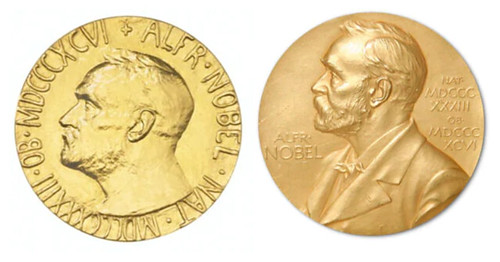
For what it's worth, far-right Norwegian lawmaker Christian Tybring-Gjedde nominated Trump for the 2021 Nobel Peace Prize in September.
For what it's worth, far-right Norwegian lawmaker Christian Tybring-Gjedde nominated Trump for the 2021 Nobel Peace Prize in September.
To read the complete article, see:
Trump Falsely Suggests He's Won the Nobel Peace Prize – With the Wrong Medal
(https://www.thewrap.com/trump-video-nobel-prize/)

SECRET TO THE PERFECT ZOOM BOOKSHELF
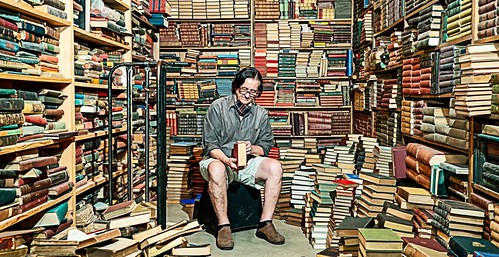
Scott Miller writes:
"I thought this article might be of some interest. I never thought to have my books arranged by a designer; I foolishly did it myself, based loosely on subject and frequency of use.
"Best wishes to everyone for a healthy, happy, and less stressful 2021"
Books by the Foot, a service run by the Maryland-based bookseller Wonder Book, has become a go-to curator of Washington bookshelves, offering precisely what its name sounds like it does. As retro as a shelf of books might seem in an era of flat-panel screens, Books by the Foot has thrived through Democratic and Republican administrations, including that of the book-averse Donald Trump. And this year, the company has seen a twist: When the coronavirus pandemic arrived, Books by the Foot had to adapt to a downturn in office- and hotel-decor business—and an uptick in home-office Zoom backdrops for the talking-head class.
The Wonder Book staff doesn't pry too much into which objective a particular client is after. If an order were to come in for, say, 12 feet of books about politics, specifically with a progressive or liberal tilt—as one did in August—Wonder Book's manager, Jessica Bowman, would simply send one of her more politics-savvy staffers to the enormous box labeled "Politically Incorrect" (the name of Books by the Foot's politics package) to select about 120 books by authors like Hillary Clinton, Bill Maher, Al Franken and Bob Woodward. The books would then be "staged," or arranged with the same care a florist might extend to a bouquet of flowers, on a library cart; double-checked by a second staffer; and then shipped off to the residence or commercial space where they would eventually be shelved and displayed (or shelved and taken down to read).
Only sometimes do Bowman and Wonder Book President Chuck Roberts know the real identity of the person whose home or project they've outfitted: "When we work with certain designers, I pretty much already know it's going to be either an A-list movie or an A-list client. They always order under some code name," Bowman says. "They're very secretive."
Roberts opened the first of Wonder Book's three locations in 1980, but Books by the Foot began with the dawn of the internet in the late 1990s. A lover of books who professes to never want to see them destroyed, he described the service as a way to make lemonade out of lemons; in this case, the lemons are used books, overstock books from publishers or booksellers, and other books that have become either too common or too obscure to be appealing to readers or collectors. "Pretty much every book you see on Books by the Foot [is a book] whose only other option would be oblivion," Roberts says.
So I guess this place is the Island of Misfit Toys Books.
-Editor
Located in Frederick, Wonder Book's 3-acre warehouse full of 4 million books is a short jaunt from the nation‘s capital. While the company ships nationally, it gets a hefty portion of its business from major cities including Washington. And, over the past two decades, Books by the Foot's books-as-decor designs have become a fixture in the world of American politics, filling local appetite for books as status symbols, objects with the power to silently confer taste, intellect, sophistication or ideology upon the places they're displayed or the people who own them.
Although TV shows set in Washington underwent a change in tone when Trump was elected (as did much of Washington itself), D.C. residents' appetites for well-stocked bookshelves, whether as functional libraries or as vanity props, seems to have survived. Or at least, that's what the demand for Books by the Foot's services would indicate: The orders Roberts and his staff handled in the Trump years weren't all that different from the orders they fielded in prior administrations.
To Roberts, though, the unchanging demand is a good thing. One of the positives for a business like his, he wrote in an email, is that familiar types of people, who work in similar fields and likely share similar aspirations, are constantly moving in and out of the area: "Military, [employees of the] State Department and embassies, political folks" are always either settling in or leaving. The imminent changeover to the Biden administration will likely bring precisely the type of new business Books by the Foot has depended on for years.
For most of the year, the coronavirus pandemic switched up the proportion of Books by the Foot's commercial to residential projects: In July, Roberts said residential orders, which had previously accounted for 20 percent of business, now accounted for 40 percent. That was partly due to the closures of offices and hotels, Roberts noted—but a few other things were afoot, too.
For one, more people were ordering books with the apparent intent to read them. "We're seeing an uptick in books by subject, which are usually for personal use," Roberts said over the summer. Because many people suddenly had extra time at home but hardly anyone was able to shop in brick-and-mortar stores, orders for, say, 10 feet of mysteries, or 3 feet of art books, rose in popularity.
Cheaters!! I may not read every last page of my books, but they're lovingly selected one at a time. Except for when I bought whole numismatic libraries. Hey - maybe there's a numismatic opportunity here - instant numismatic bookshelves for Zooming and Instagraming coin dealers. Fifteen feet of coin books, please. -Editor
To read the complete article, see:
Washington's Secret to the Perfect Zoom Bookshelf? Buy It Wholesale.
(https://www.politico.com/news/magazine/2020/12/26/books-by-the-foot-washington-dc-covid-books-440347)
There was a New York Times article back on May 1st on the rise of the ‘Credibility Bookcase'. -Editor
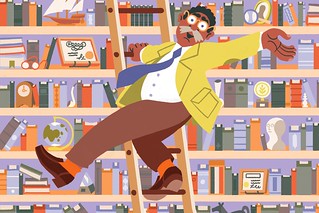 Imagine that you are a member of the expert class — the kind of person invited to pontificate on television news programs. Under normal circumstances, your expertise might be signaled to the public by a gaudy photograph of skyscrapers superimposed behind your head. But now the formalities of the broadcast studio are a distant memory, and the only tools to convey that you truly belong on television are the objects within your own home. There's only one move: You talk in front of a bookcase.
Imagine that you are a member of the expert class — the kind of person invited to pontificate on television news programs. Under normal circumstances, your expertise might be signaled to the public by a gaudy photograph of skyscrapers superimposed behind your head. But now the formalities of the broadcast studio are a distant memory, and the only tools to convey that you truly belong on television are the objects within your own home. There's only one move: You talk in front of a bookcase.
As the broadcast industry shelters in place, the bookcase has become the background of choice for television hosts, executives, politicians and anyone else keen on applying a patina of authority to their amateurish video feeds.
In April, an anonymous Twitter account, Bookcase Credibility, emerged to keep an eye on the trend and quickly accumulated more than 30,000 followers. Its tagline is "What you say is not as important as the bookcase behind you," and it offers arch commentary on the rapidly solidifying tropes of the genre as well as genuine respect for a well-executed specimen.
To read the complete article, see:
The ‘Credibility Bookcase' Is the Quarantine's Hottest Accessory
(https://www.nytimes.com/2020/05/01/arts/quarantine-bookcase-coronavirus.html)

CAPITALISM RESOLVES COIN SHORTAGE PROBLEM
A Wall Street Journal Opinion article by economist Stephen Moore examines the COVID coin shortage. -Editor
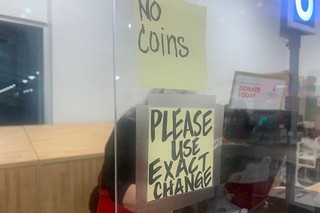 Making change used to be a bit of a joke. A memorable "Saturday Night Live" parody ad in 1988 imagined the "First CityWide Change Bank," which gave its customers the denominations they want: "If you come to us with a $100 bill, we're not going to give you 2,000 nickels—unless that meets your particular change needs."
Making change used to be a bit of a joke. A memorable "Saturday Night Live" parody ad in 1988 imagined the "First CityWide Change Bank," which gave its customers the denominations they want: "If you come to us with a $100 bill, we're not going to give you 2,000 nickels—unless that meets your particular change needs."
Nowadays getting the change you want is no laughing matter. In many cities making change has become a cash cow for some because of the great U.S. coin shortage. Covid has limited banks hours and shut down the retail businesses that often return coins to circulation. It doesn't help that Americans have a tendency to dump coins in shoeboxes and never use them again, keeping many in-circulation quarters and pennies sequestered.
Nickel-and-diming isn't going away, even in the digital age—though it's quarters in particular that are in high demand. Americans still need coins at laundromats, to pump air in their tires at gas stations and for old fashioned parking meters. It's costly to retrofit coin-operated machines.
Don't panic. Washington is coming to the rescue with its usual turtlelike agility. Officials at the U.S. Mint concede that "sometimes coins are not readily available." The Mint's director, David J. Ryder, has asked consumers to "help get coins moving by using exact change when making purchases, taking your coins to financial institutions, or turning them in for cash at coin recycling kiosks." He says that production of coins is rising now given the demands.
As usual, the free market is way ahead of the government. Customers at the Pennsylvania-based Wawa convenience-store chain can change their coins for bills and come away with a free coffee. For one week in July, the Community State Bank in Wisconsin gave a $5 bonus for every $100 worth of coins turned in. My son tells me that San Francisco even has an active secondary market of enterprising entrepreneurs hanging out and serving as, well, "change agents." A couple of quarters go for as much as a dollar, a roll of 40 for $11 or $12.
What we have here is a basic Economics 100 lesson on supply and demand. People will pay more than 25 cents for a quarter for the same reasons they pay $4 to get $60 from an out-of-network ATM or $7 for a Budweiser at a football stadium—scarcity and convenience. Those who offer these services make a good buck so to speak for being in the right place at the right time. Isn't capitalism wonderful?
I don't think it's fair to fault the U.S. Mint for the problem - they're cranking out record numbers of new coins. And as for supply and demand, all I can think is, "well, duh.." Of course the price of a scarce commodity goes up. That's how the world works. But yes, it's also OK to complain about higher prices - that's how people work. The author wonders: "Will the do-gooders in Congress try to make it a crime to charge five dimes or a dollar bill for a quarter?" I have to agree that "... restrictions will only hurt consumers in a pinch and make it harder to wash your clothes." Let the market solve the problem. -Editor
To read the complete article (subscription required), see:
America Is Willing to Pay for Change
(https://www.wsj.com/articles/america-is-willing-to-pay-for-change-11609284111)
TOOTH FAIRIES
For collectors having nightmares about the disappearance of cash, here's something more to fret over. -Editor
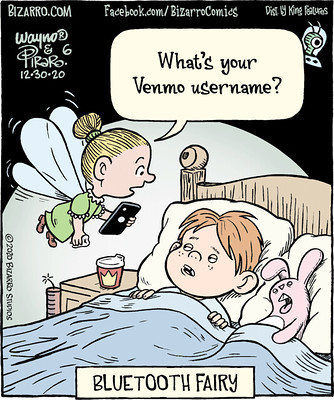
And speaking of tooth fairies, The Australian Coin Collecting Blog discusses the new 2021 Royal Australian Mint tooth fairy coin. -Editor
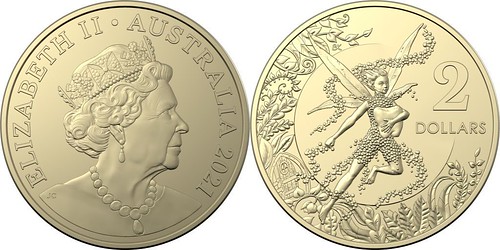
The tooth fairy is back in 2021 on this new release $2 coin struck by the Royal Australian Mint. Issued in a collector card for $15 or in a boxed kit for $25 this is a must have for the little person and their lost tooth! Let's not forget us coin collectors who are eagerly awaiting to add this to the evergrowing commemorative $2 coin collections.
The coin design is the same as issued in 2020, the reverse by Mint designer Bronwyn King featuring the fairy herself holding a baby tooth. The colour of the packaging is all that differs.
To read the complete articles, see:
BIZARRO: Wednesday, December 30, 2020
(https://www.comicskingdom.com/bizarro/2020-12-30)
2021 Tooth Fairy $2 Coin
(https://www.australian-coins.com/collecting-coins/2021-tooth-fairy-2-coin/)
